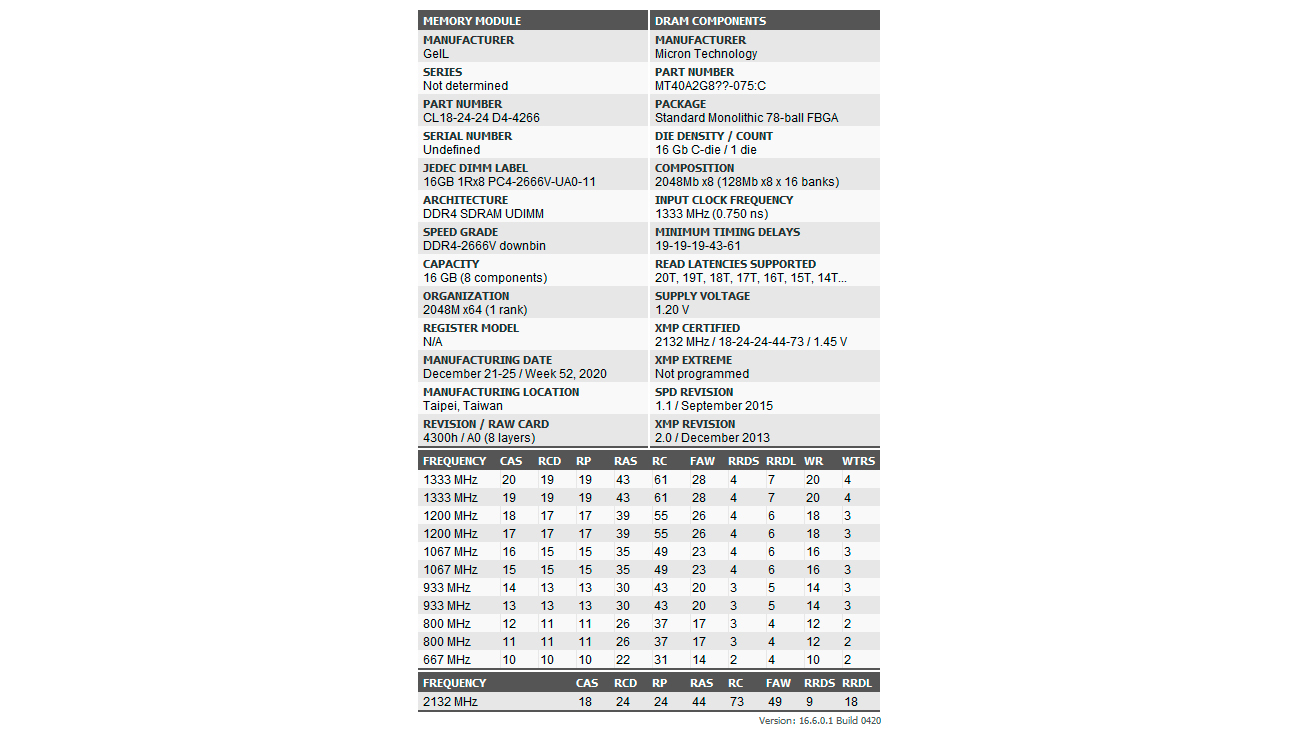Tom's Hardware Verdict
Burdened by a single-rank design, GeIL's Orion AMD Edition DDR4-4266 C18 fails to keep up with rival 2x16GB memory kits that leverage a dual-rank design.
Pros
- +
Low-profile design
- +
Heat spreader without RGB
Cons
- -
Single-rank design
- -
Substandard performance
- -
Pricey
Why you can trust Tom's Hardware
Many would agree that 16GB is the sweet spot for the average consumer. However, prosumers and professional users typically require more memory since they deal with heavy workloads, some of which can benefit from high-speed memory. While memory vendors can stick to more mainstream data rates, such as DDR4-3200 or even DDR4-3600, plenty of brands also put out faster memory kits to cater to that niche market. For example, GeIL has released the Orion AMD Edition DDR4-4266 memory kit, but it remains to be seen whether it can hang with the best RAM that's commercially available.
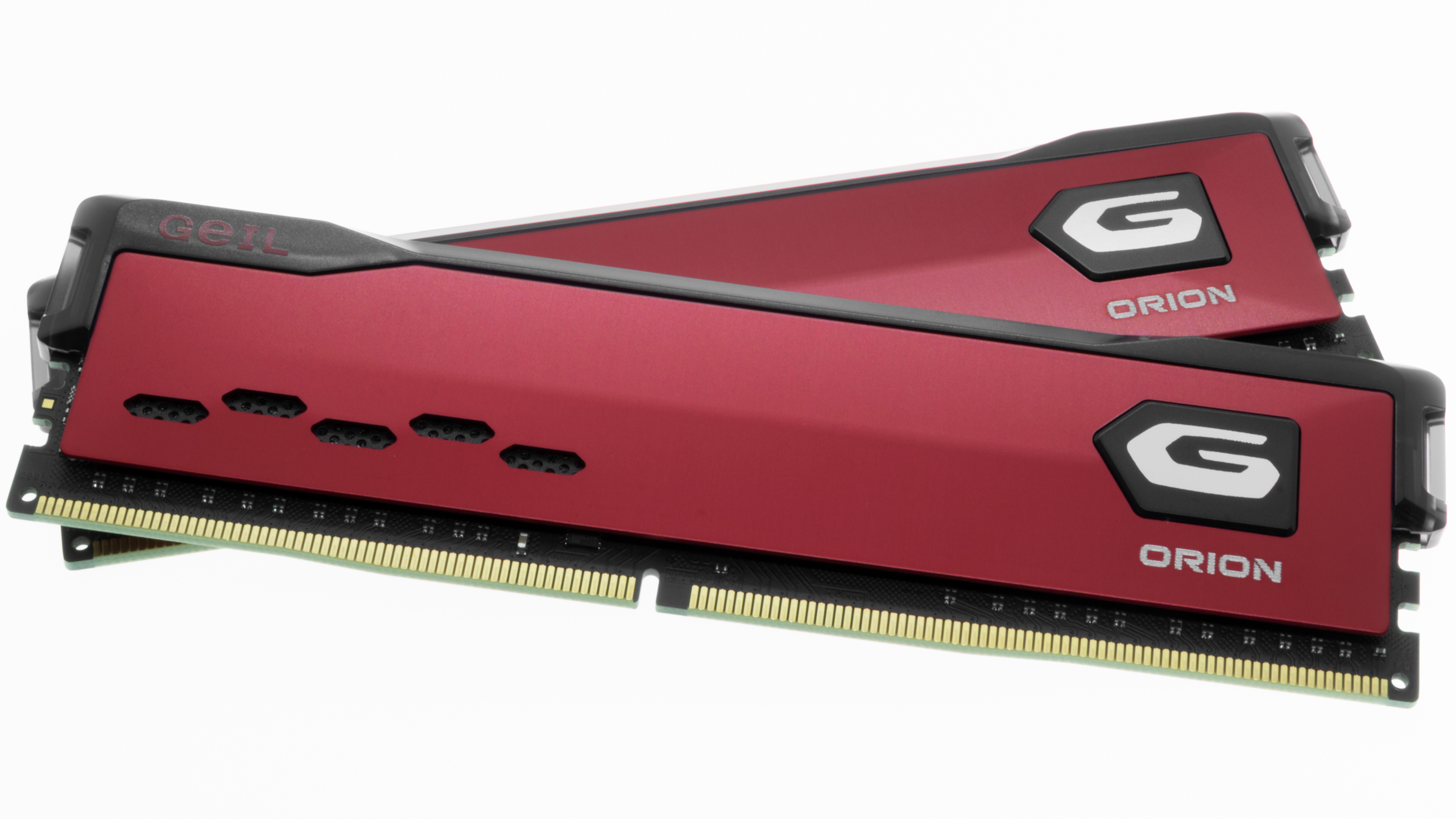
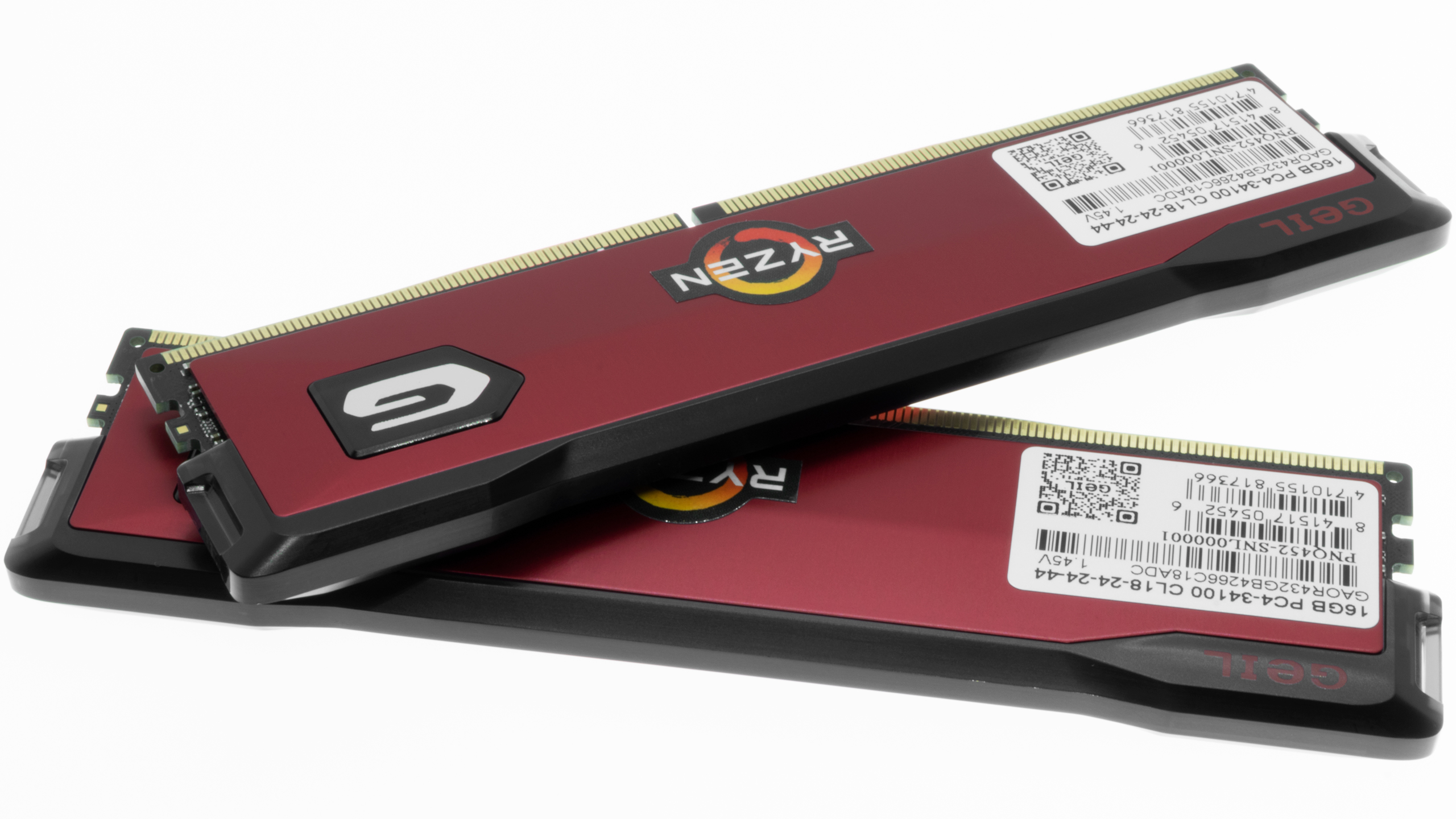
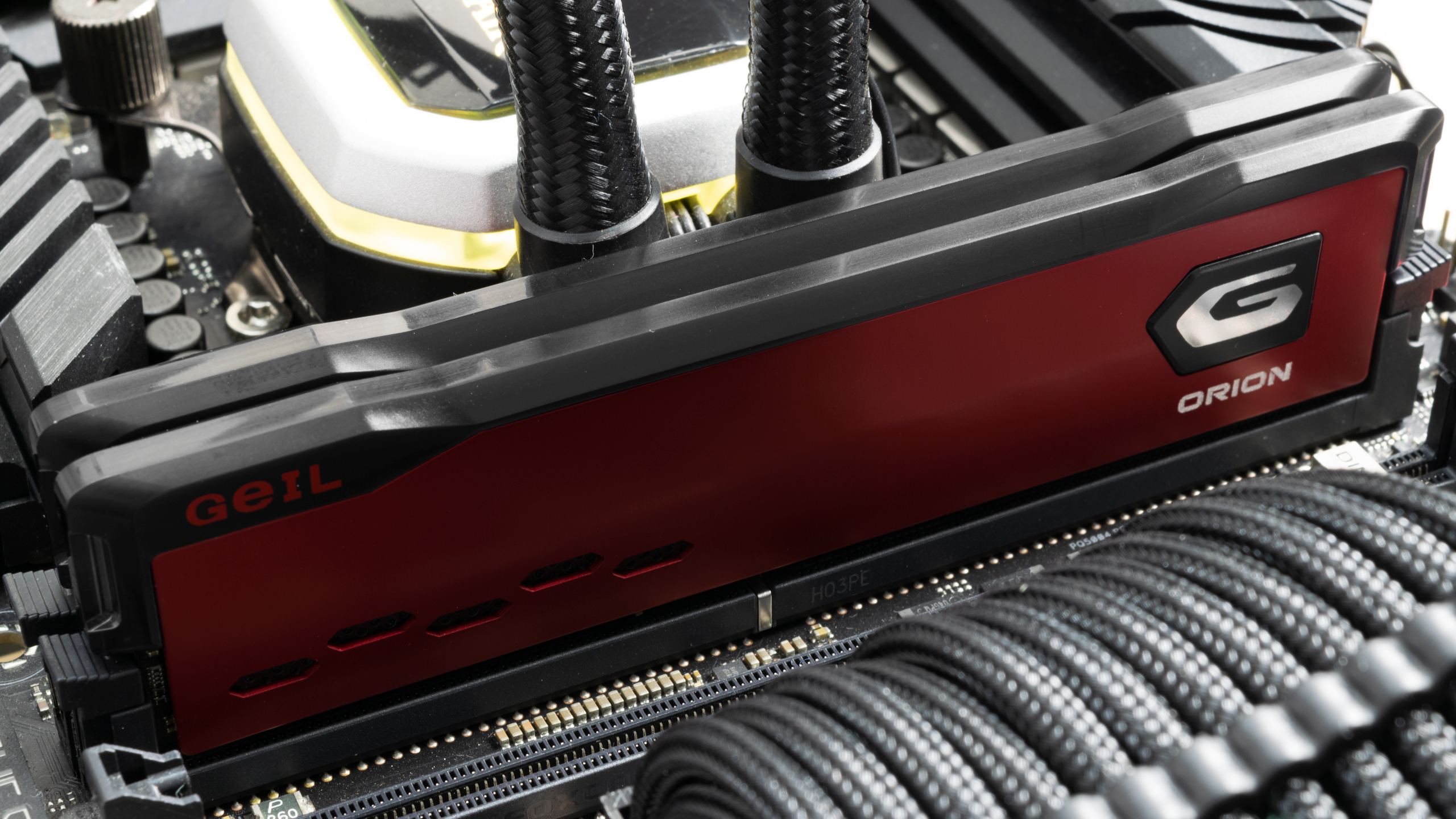
Sporting the familiar low-profile design, GeIL's Orion memory is no taller than 37.34mm (1.47 inches). Our sample features a black-and-red heat spreader, but the Orion also comes in a black-and-titanium trim for those looking for a more aggressive look. The design, overall, looks very clean with minimum marketing elements. However, GeIL did slap a Ryzen sticker on one side of the heat spreader to tell consumers that this particular memory kit is specifically optimized for AMD platforms.
GeIL sells the Orion AMD Edition DDR4-4266 C18 memory kit in a dual-channel package. The pair of 8GB memory modules features a black, eight-layer PCB with a single-rank design. Thaiphoon Burner detected the integrated circuits (ICs) as Micron's MT40A2G8??-075:C (C-die) chips.
The native data rate for this memory kit is DDR4-2666 with 19-19-19-43 timings. The Orion comes with XMP 2.0 support, so you can use the DDR4-4266 profile if you're feeling too lazy to set it up manually. The DDR4-4266 profile will configure the memory to run at 1.45V with timings dialed to 18-24-24-44. For more on timings and frequency considerations, see our PC Memory 101 feature, as well as our How to Shop for RAM story.
Comparison Hardware
| Memory Kit | Part Number | Capacity | Data Rate | Primary Timings | Voltage | Warranty |
|---|---|---|---|---|---|---|
| GeIL Orion AMD Edition | GAOR432GB4266C18ADC | 2 x 16GB | DDR4-4266 (XMP) | 18-24-24-44 (2T) | 1.45 Volts | Lifetime |
| G.Skill Trident Z Royal | F4-4000C17D-32GTRGB | 2 x 16GB | DDR4-4000 (XMP) | 17-18-18-38 (2T) | 1.40 Volts | Lifetime |
| Crucial Ballistix Max RGB | BLM2K16G40C18U4BL | 2 x 16GB | DDR4-4000 (XMP) | 18-19-19-39 (2T) | 1.35 Volts | Lifetime |
| G.Skill Trident Z Neo | F4-3600C16D-32GTZN | 2 x 16GB | DDR4-3600 (XMP) | 16-16-16-36 (2T) | 1.35 Volts | Lifetime |
| Mushkin Redline Lumina | MLA4C360GKKP16GX2 | 2 x 16GB | DDR4-3600 (XMP) | 16-19-19-39 (2T) | 1.40 volts | Lifetime |
| Klevv Bolt XR | KD4AGU880-36A180C | 2 x 16GB | DDR4-3600 (XMP) | 18-22-22-42 (2T) | 1.35 Volts | Lifetime |
| Patriot Viper Steel RGB | PVSR432G360C0K | 2 x 16GB | DDR4-3600 (XMP) | 20-26-26-46 (2T) | 1.35 Volts | Lifetime |
Our Intel test system consists of the Intel Core i9-10900K processor and the Asus ROG Maximus XII Apex on the 0901 firmware. On the opposite side, our AMD testbed is based around the AMD Ryzen 9 5900X and the Asus ROG Crosshair VIII Dark Hero with the 3501 firmware. We use the MSI GeForce RTX 2080 Ti Gaming Trio as our primary graphics card for gaming RAM benchmarks.
Intel Performance
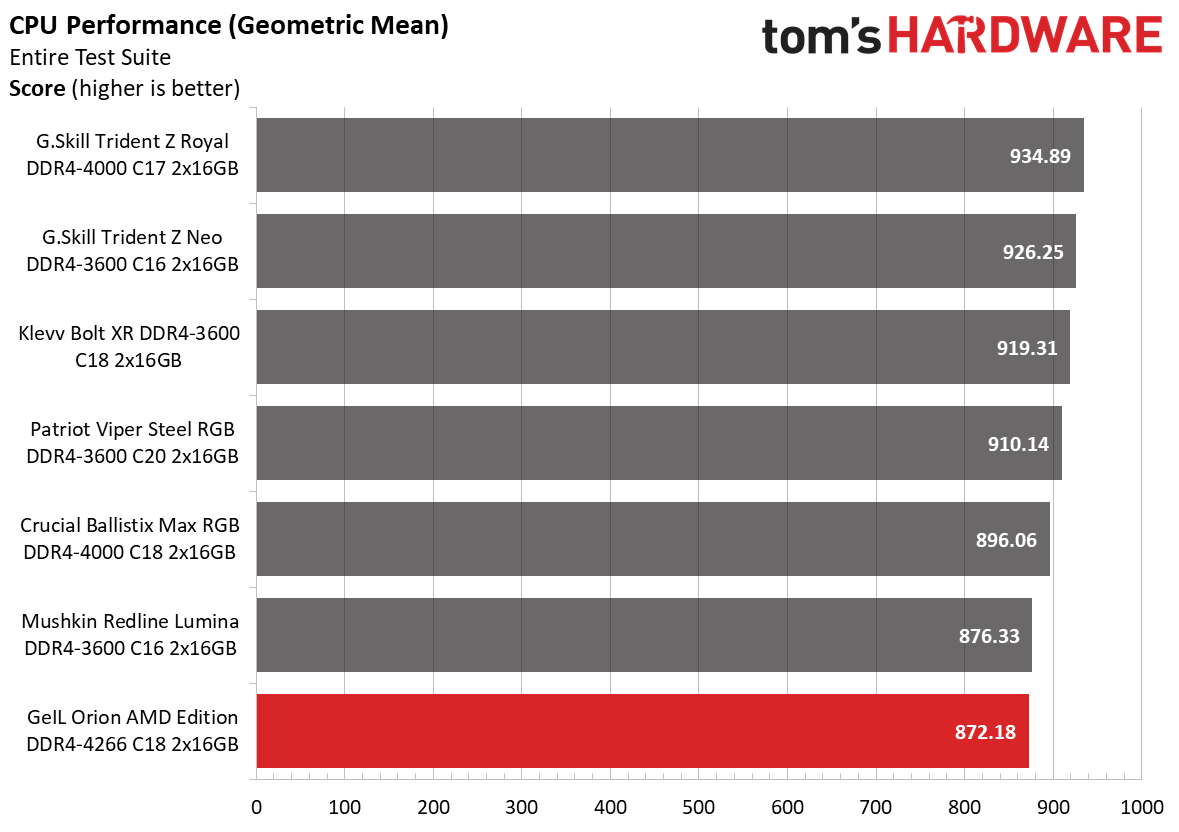
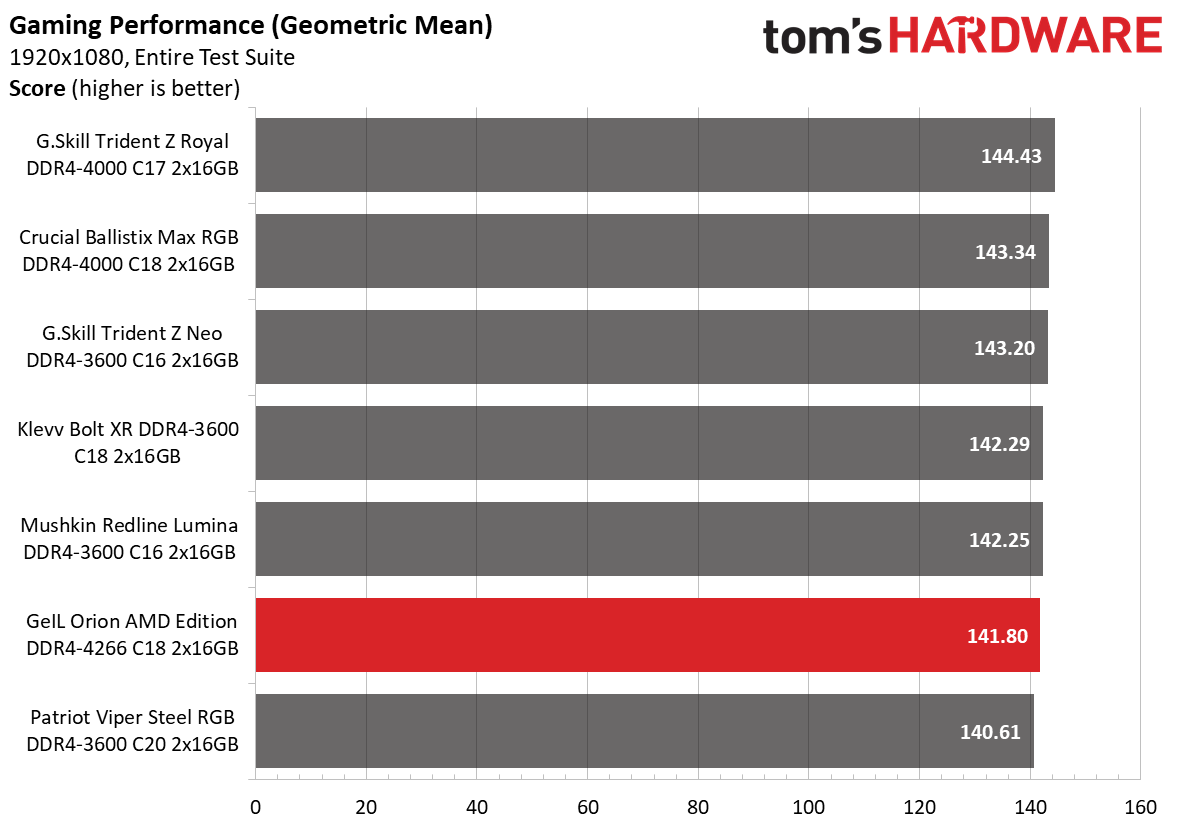
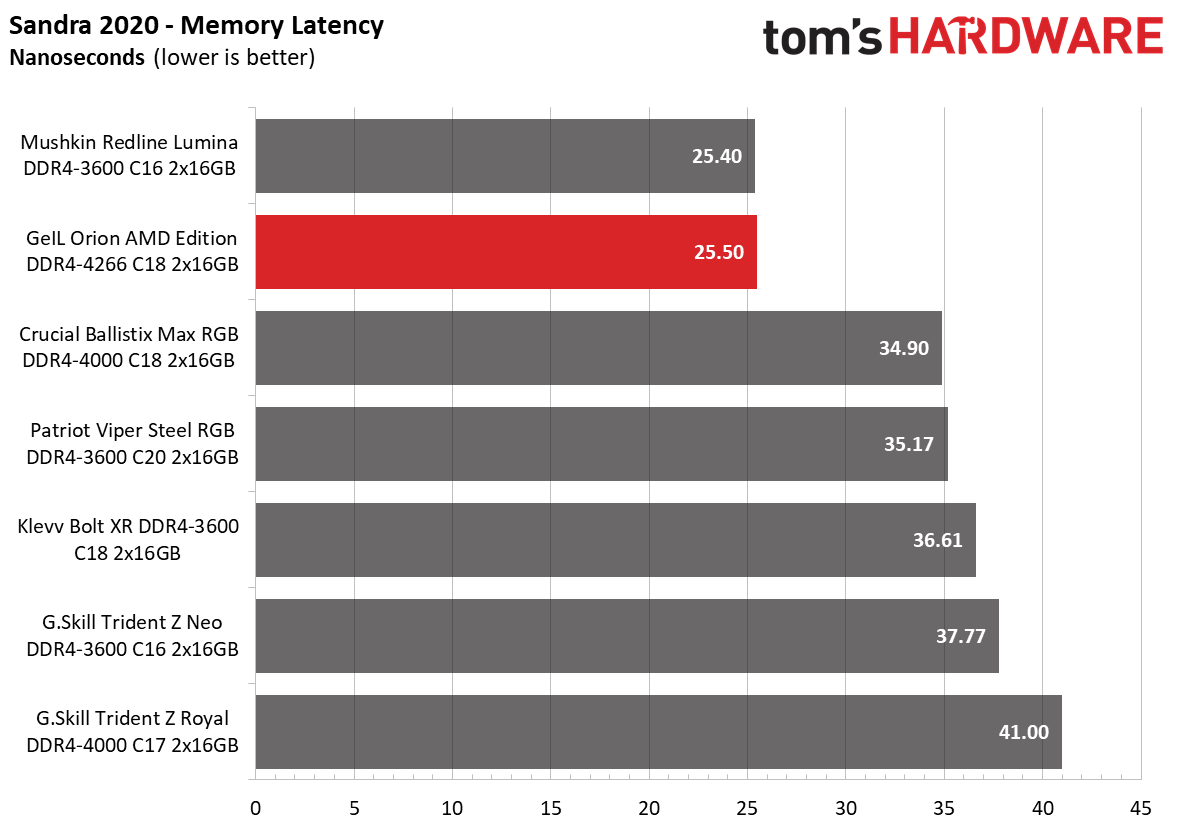
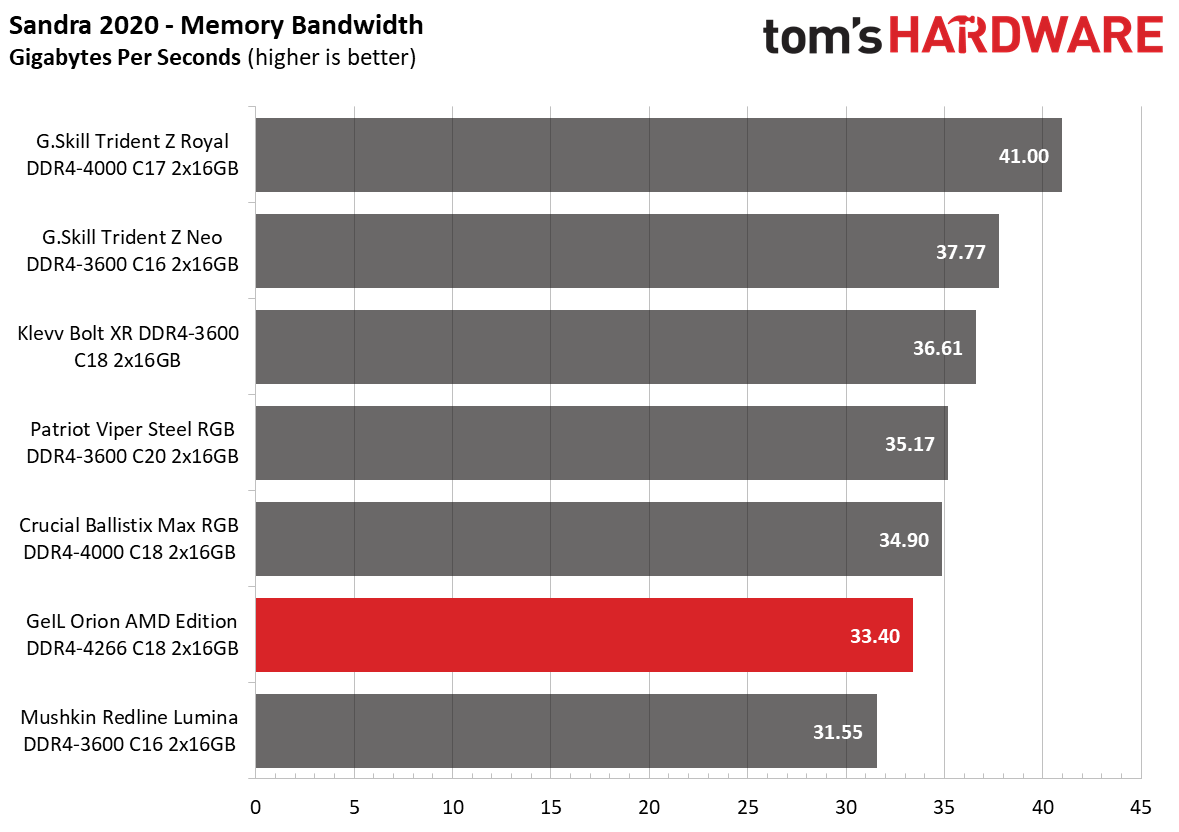
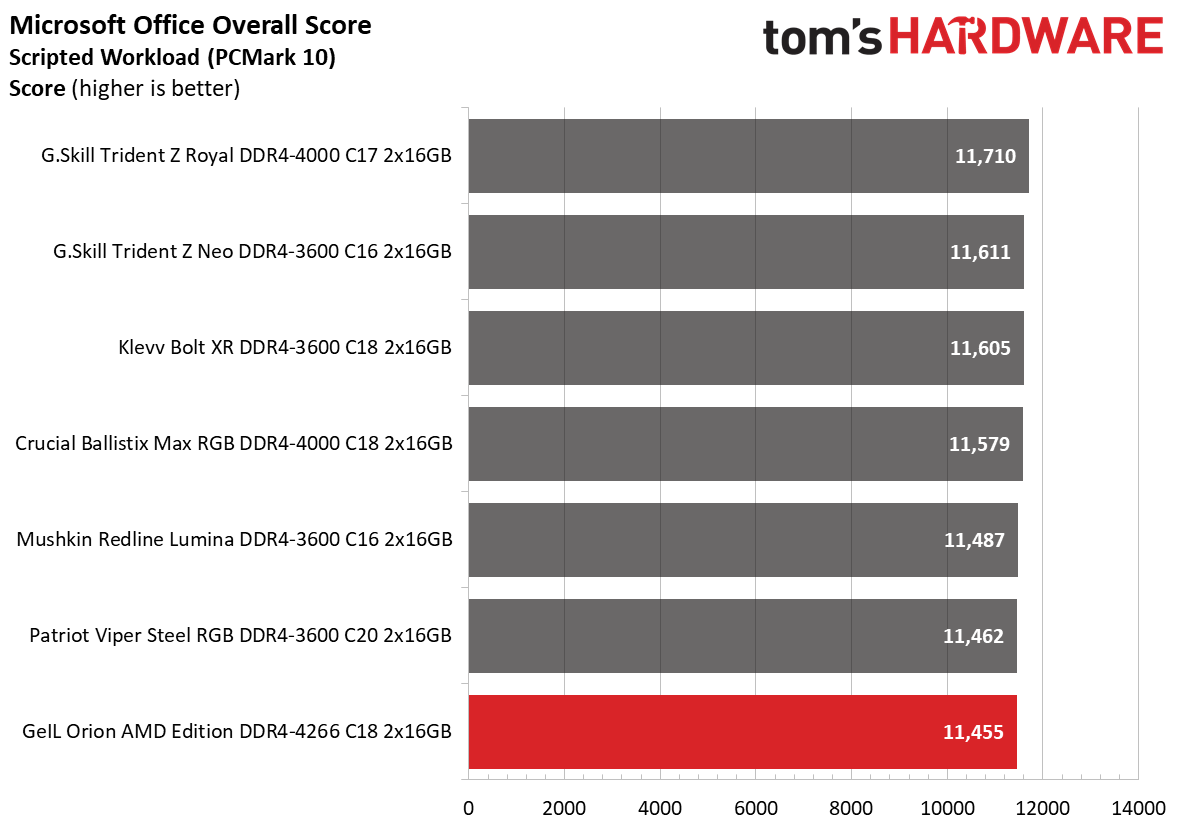

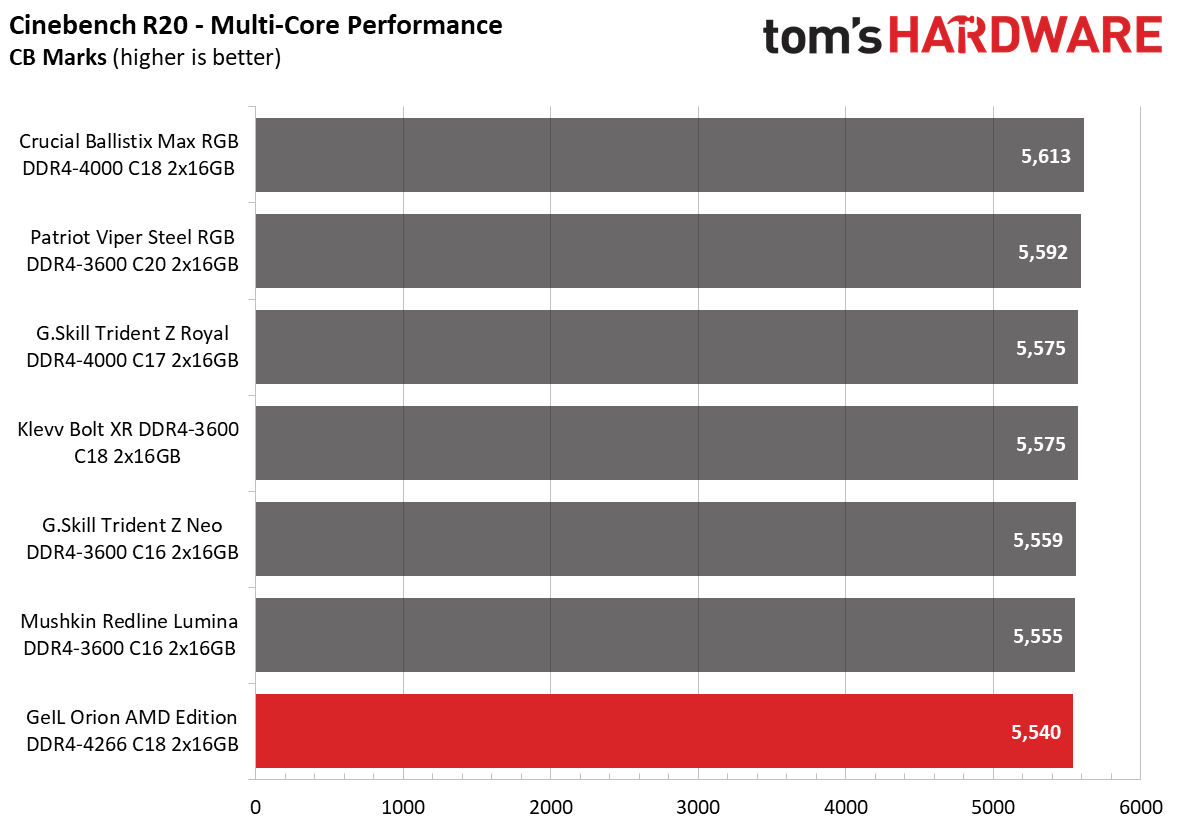
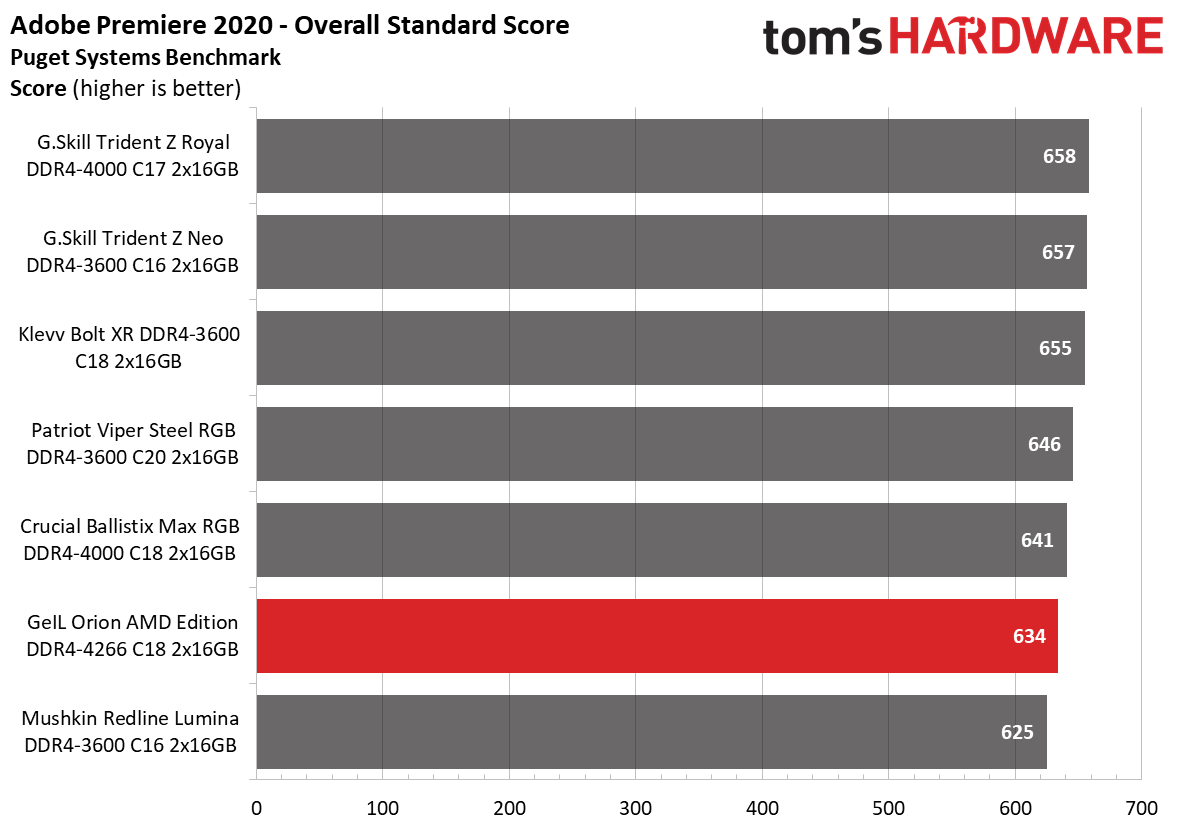
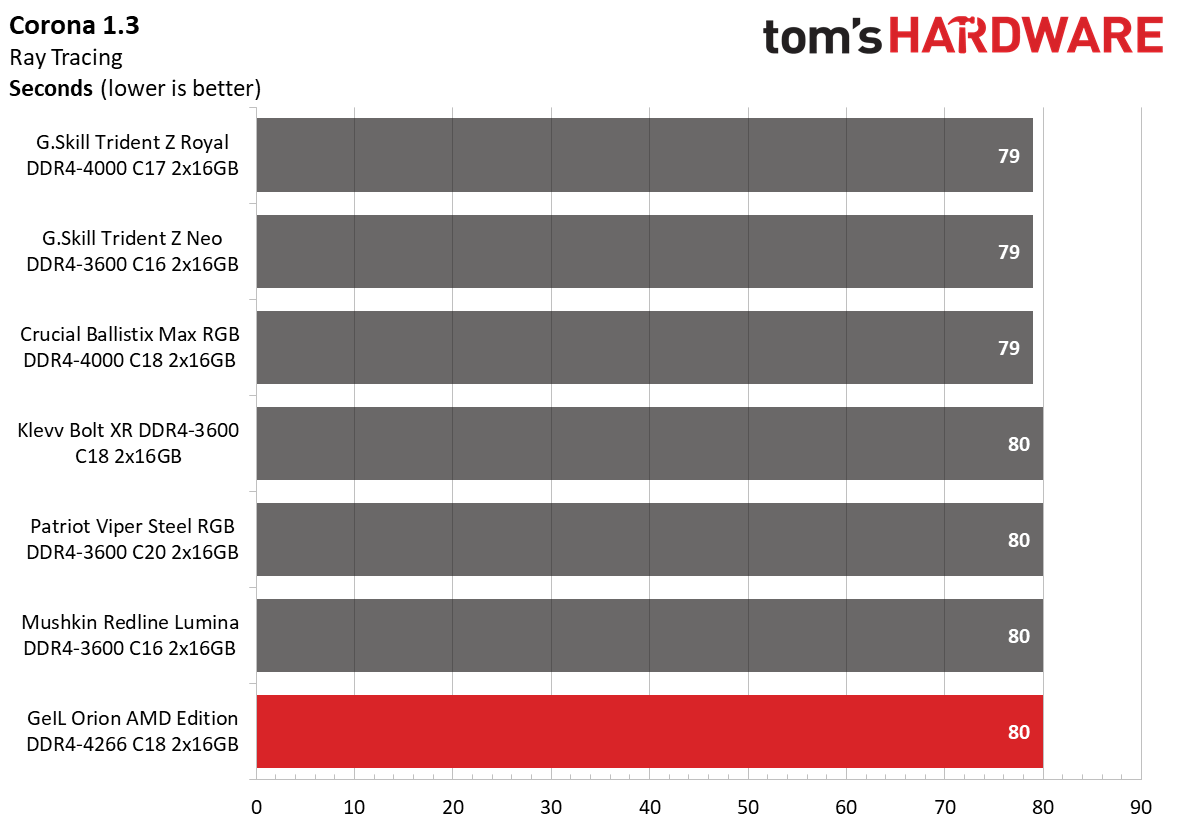

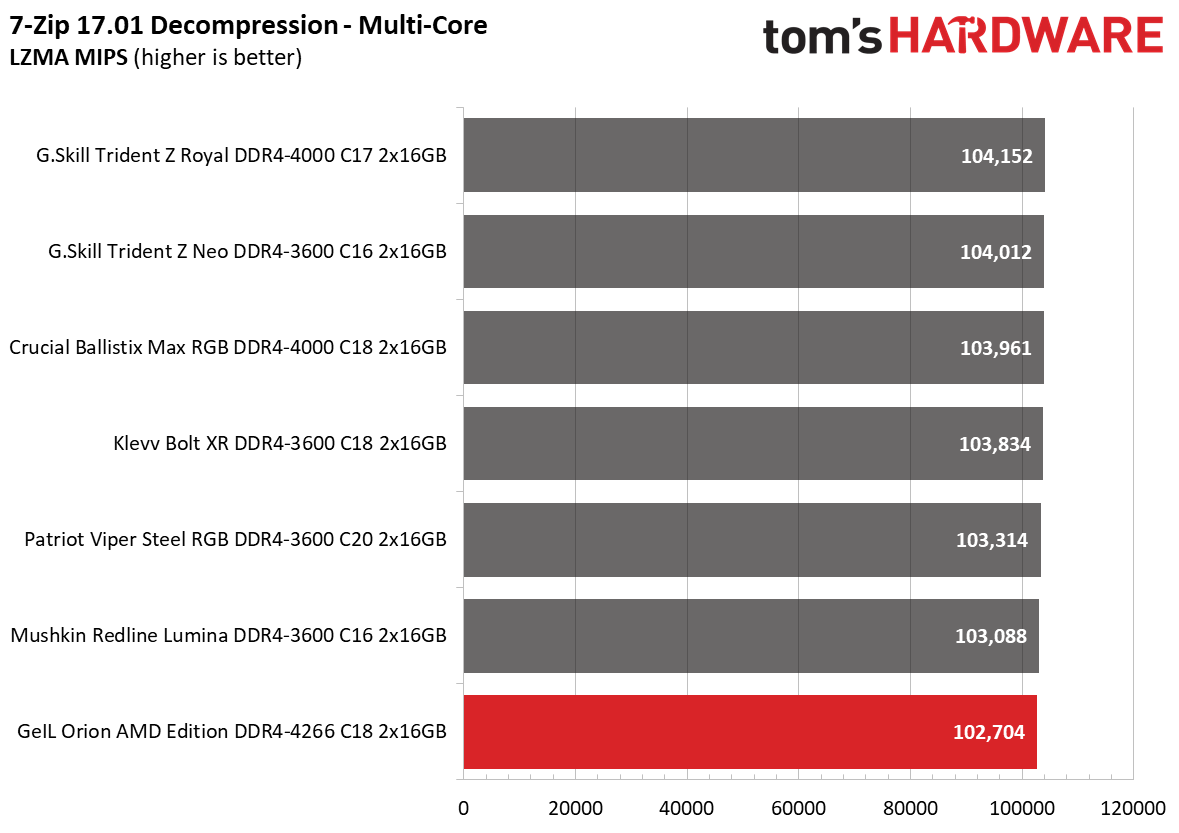
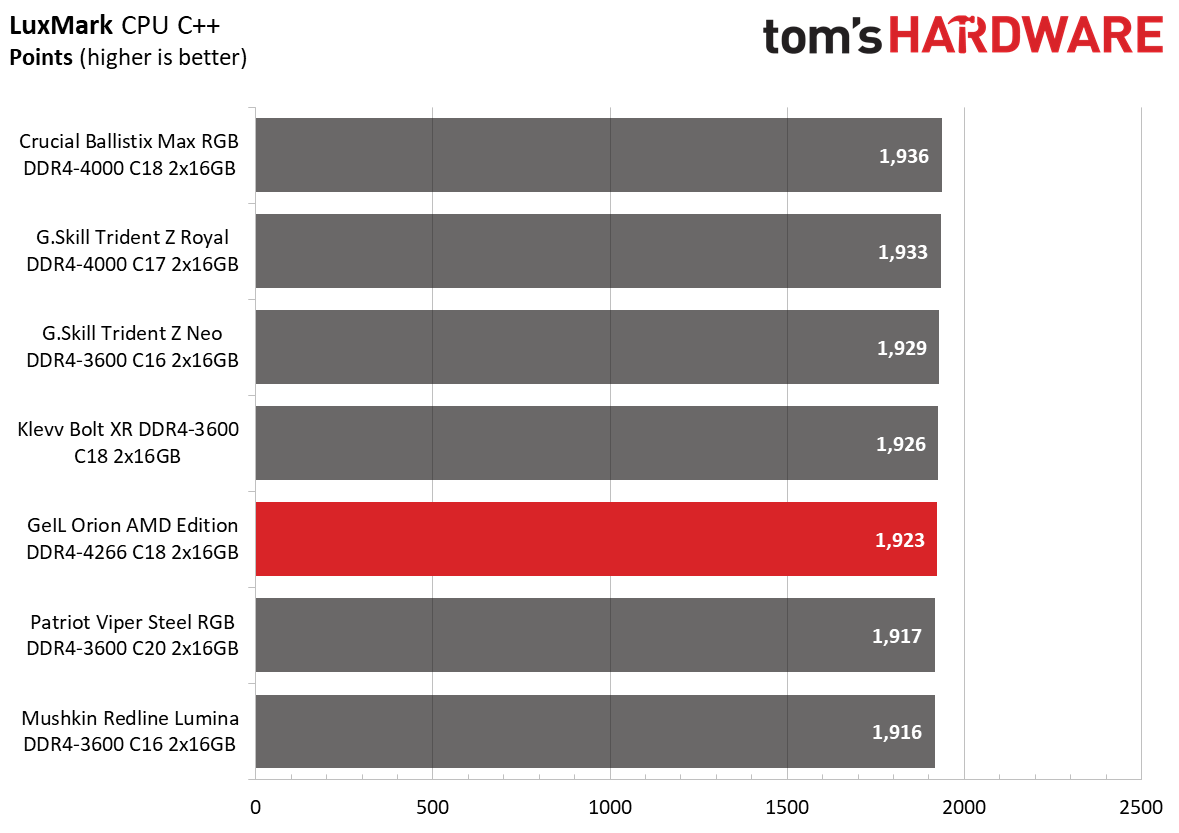
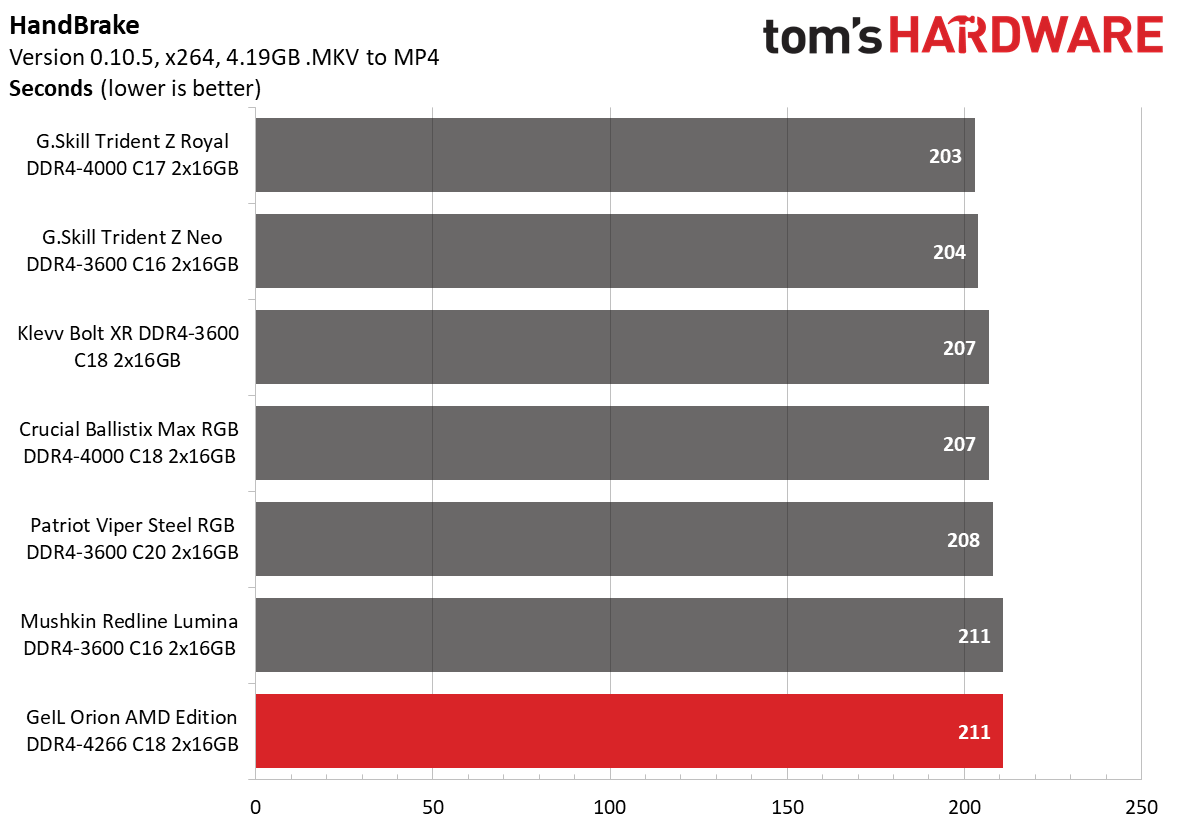


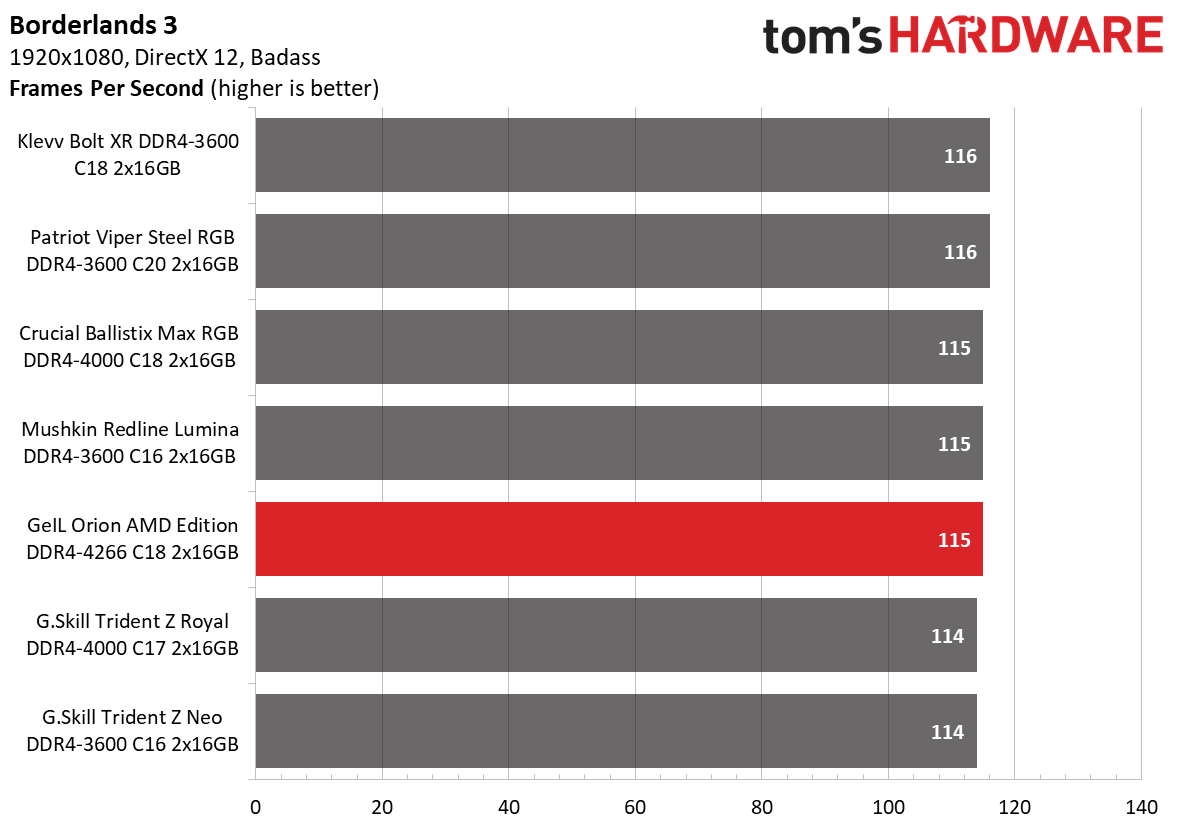
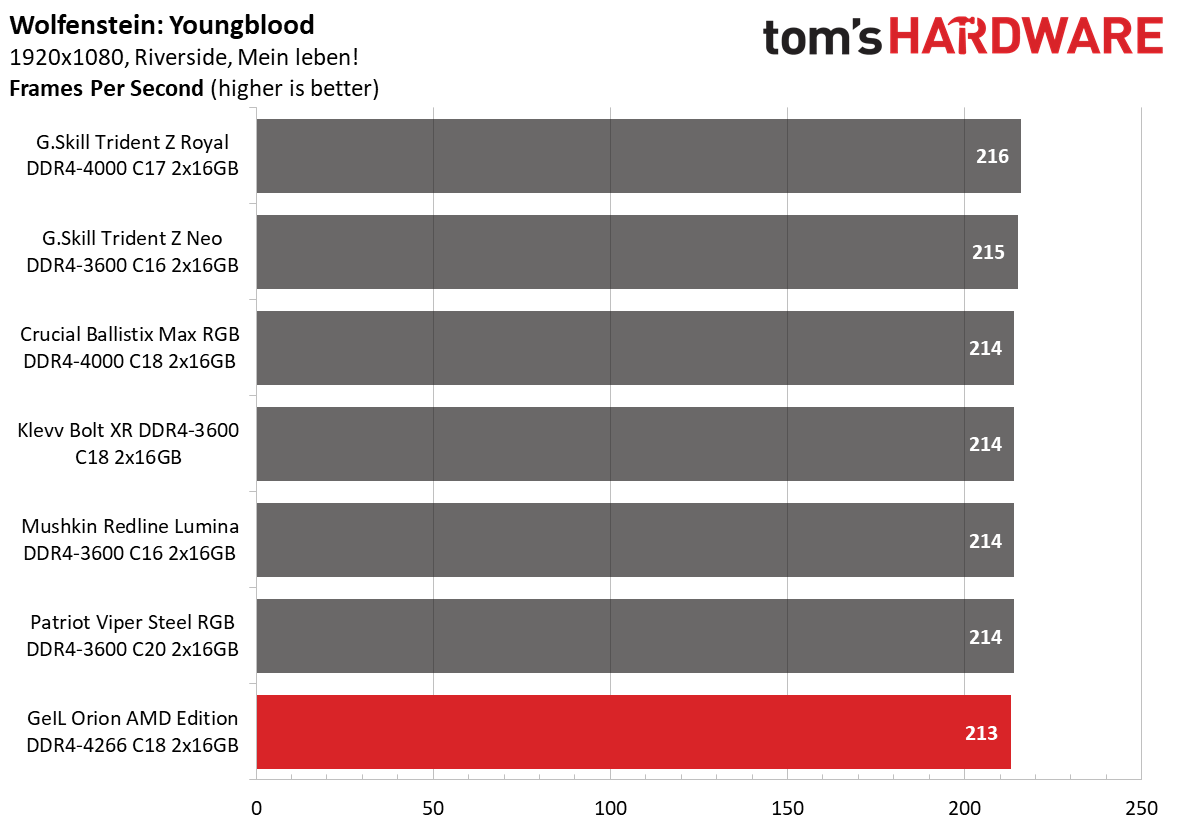
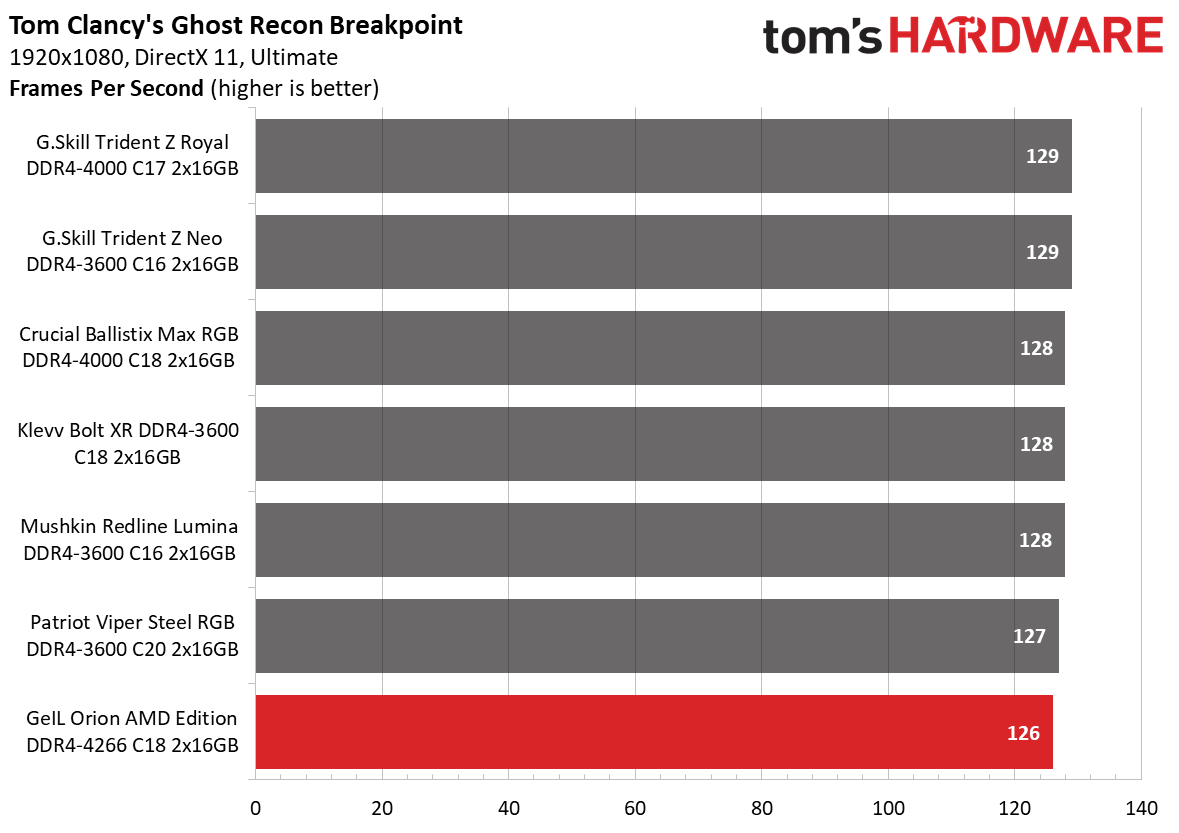
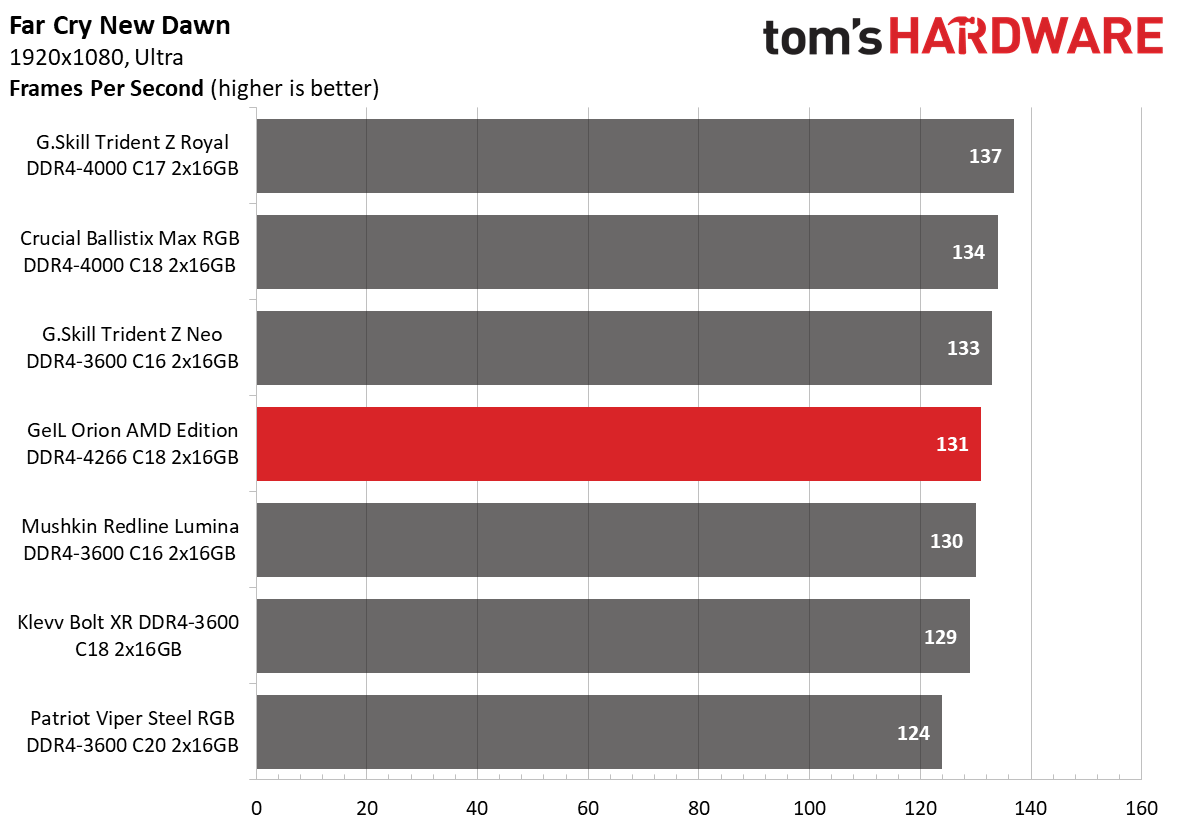
GeIL's Orion memory kit found itself at the bottom of the application performance chart due to its single-rank design. There's a 7% margin between the Orion and the fastest memory kit, which in this case is G.Skill's Trident Z Royal DDR4-4000 C17.
AMD Performance
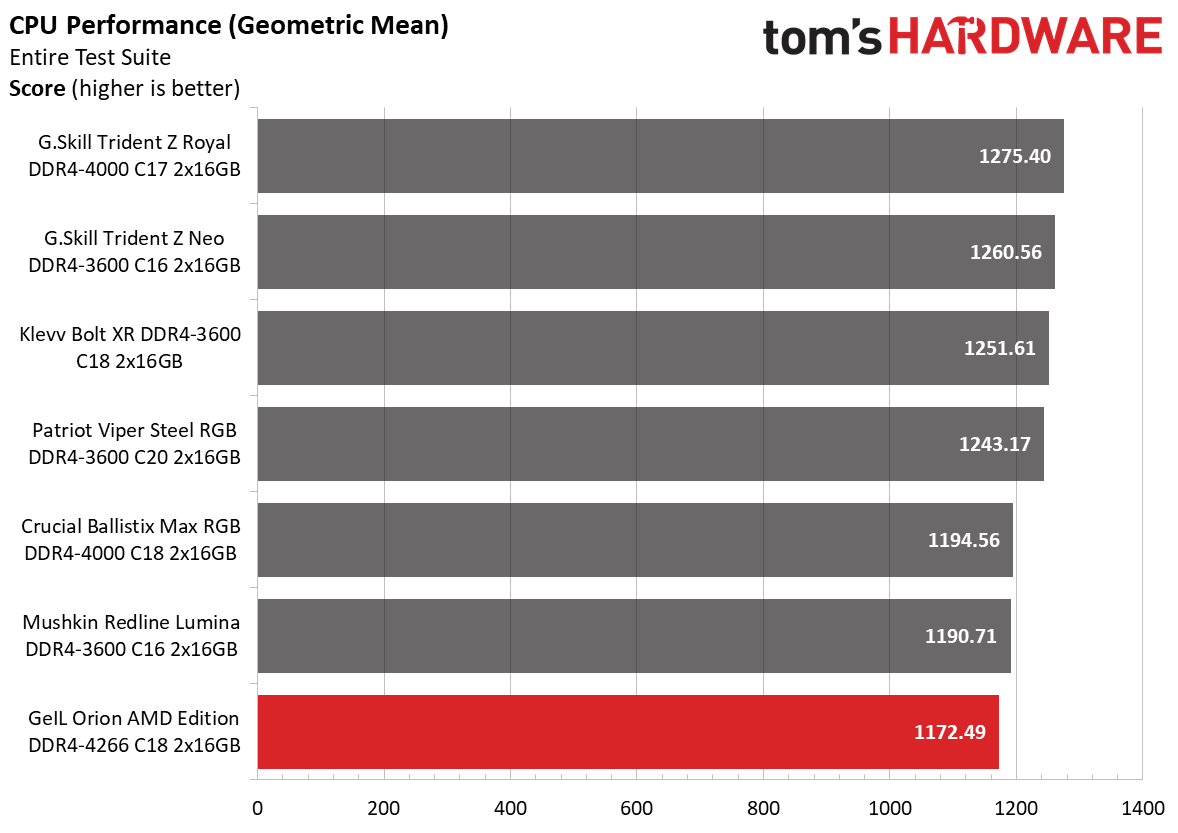
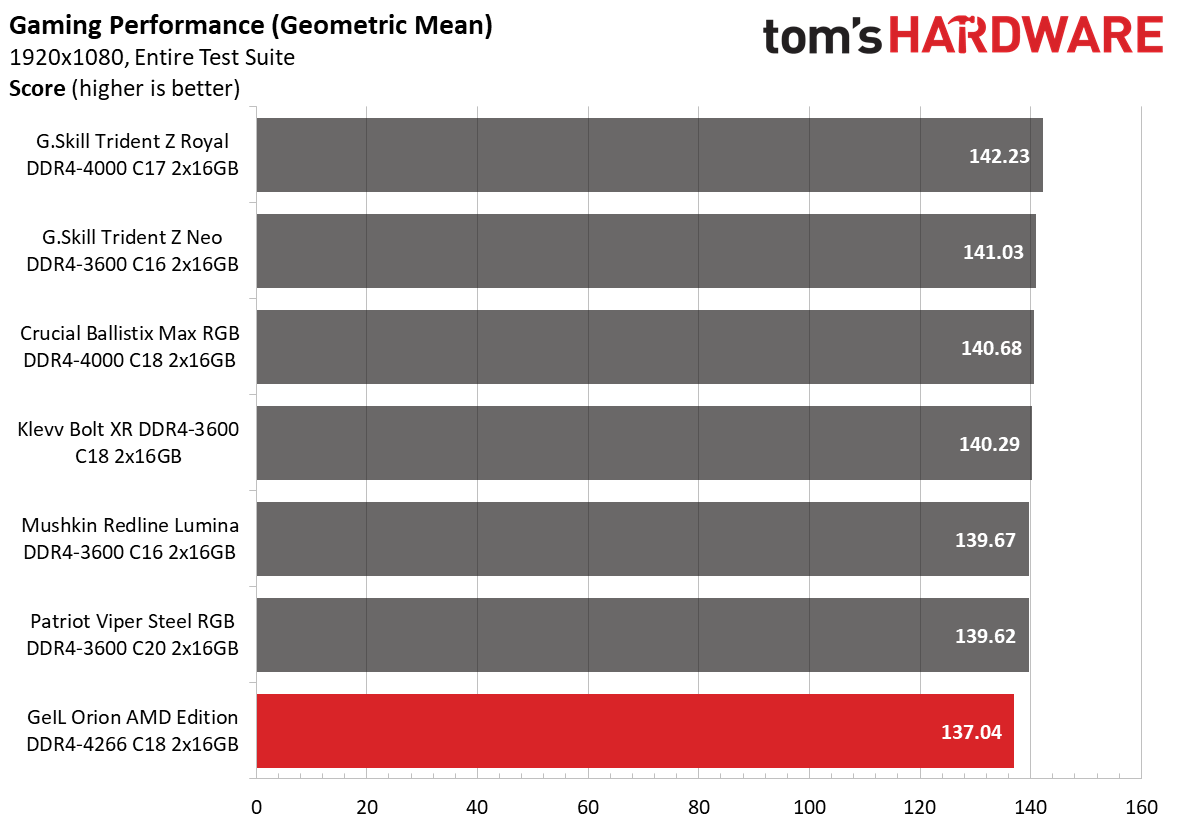

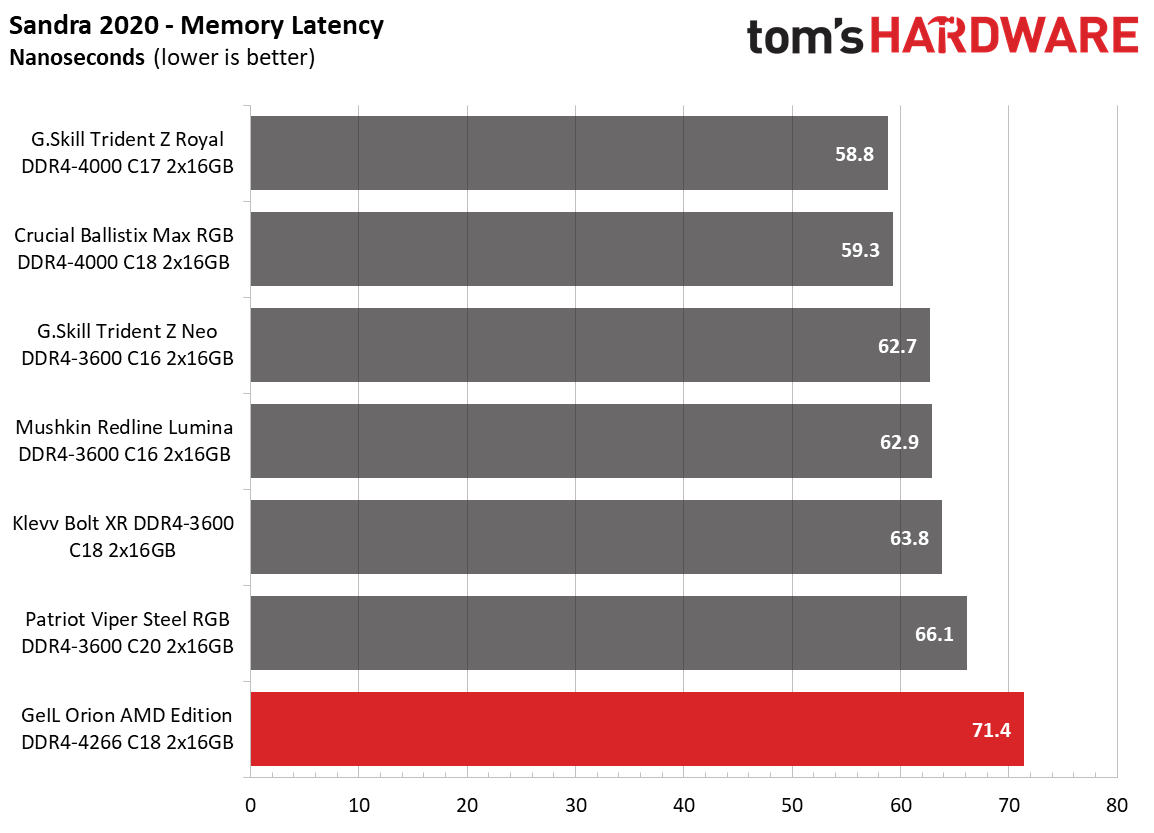
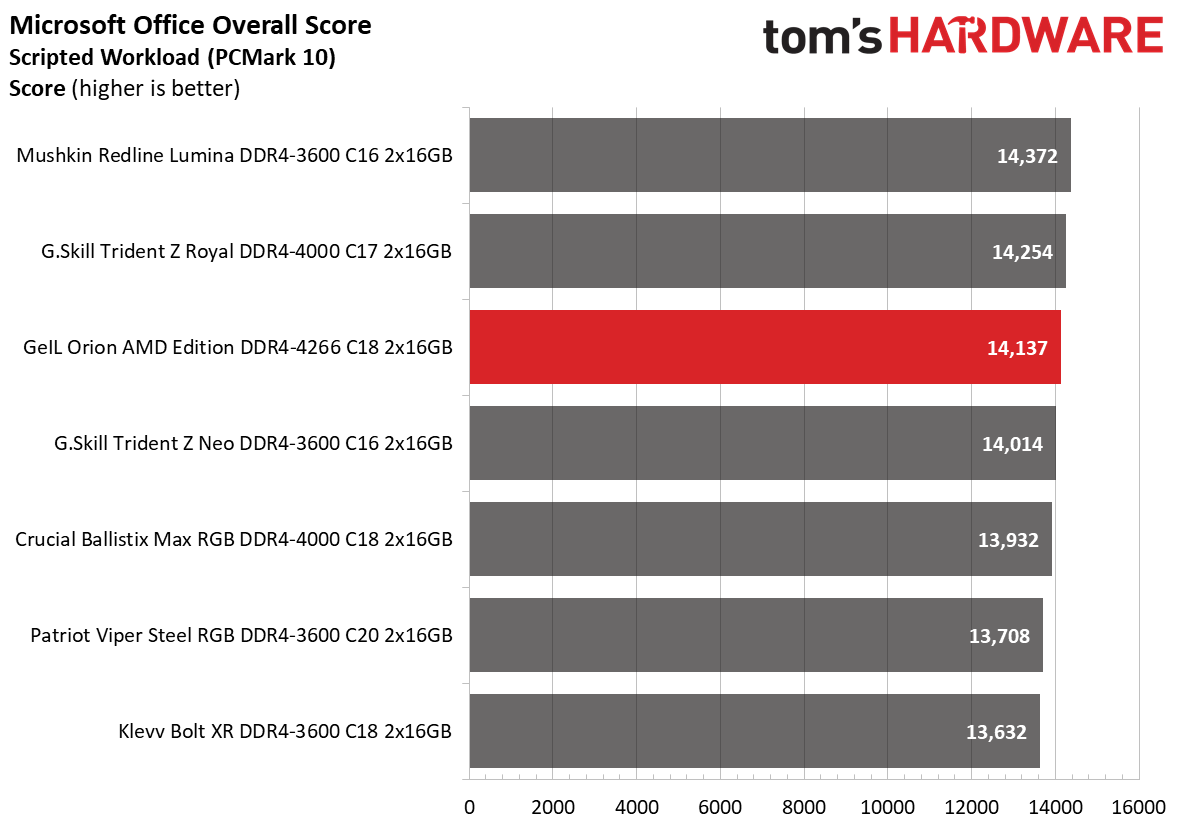
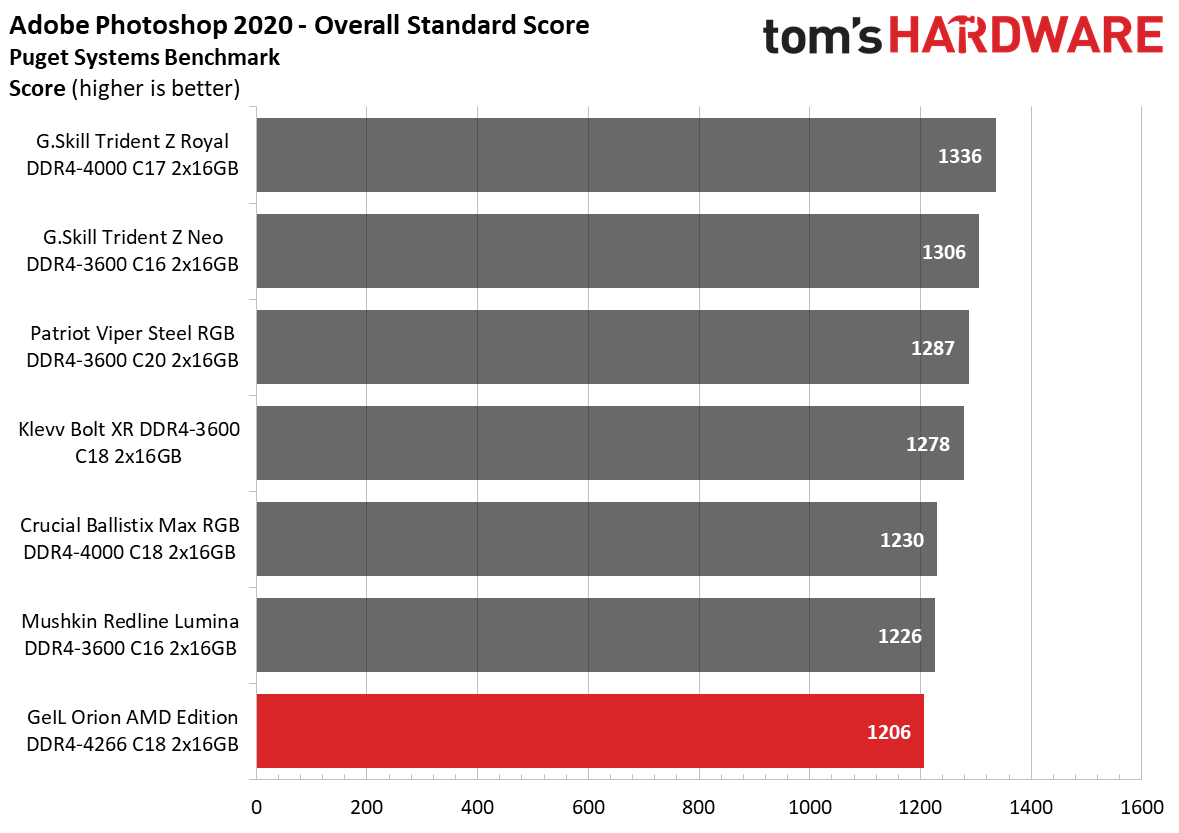
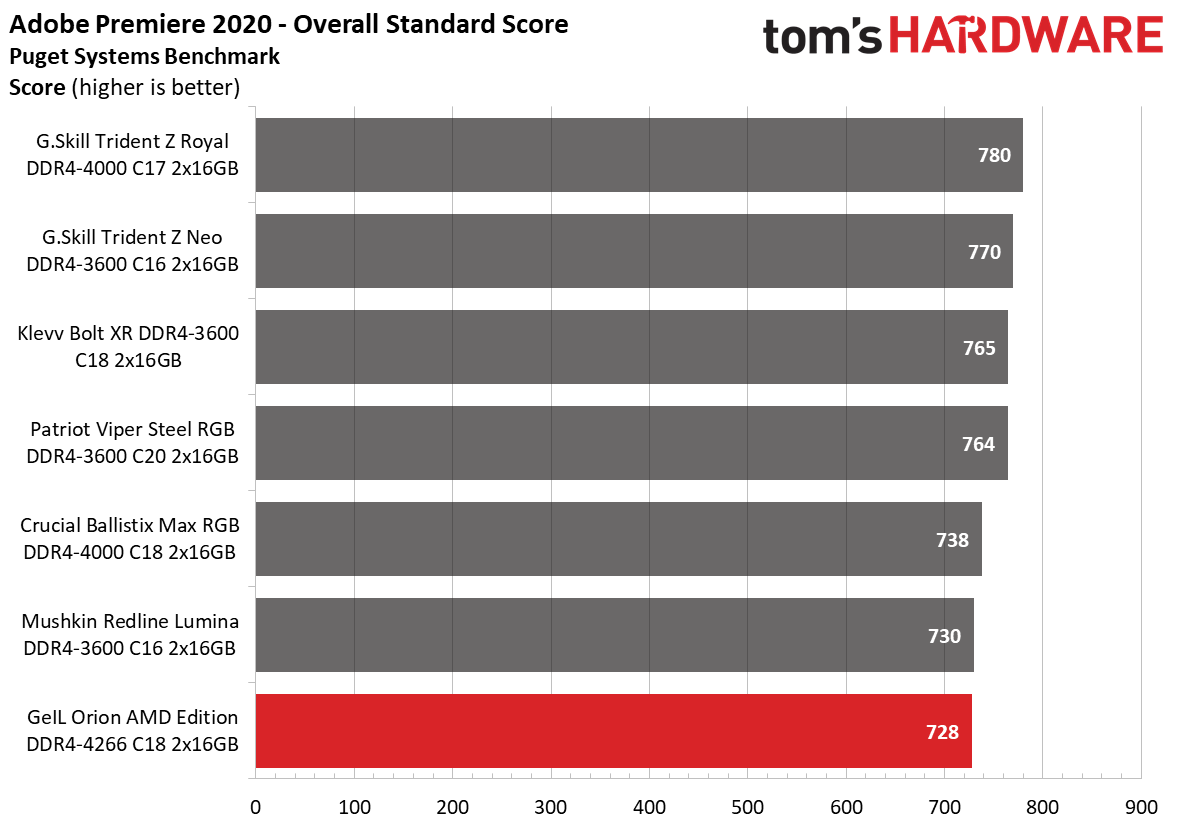

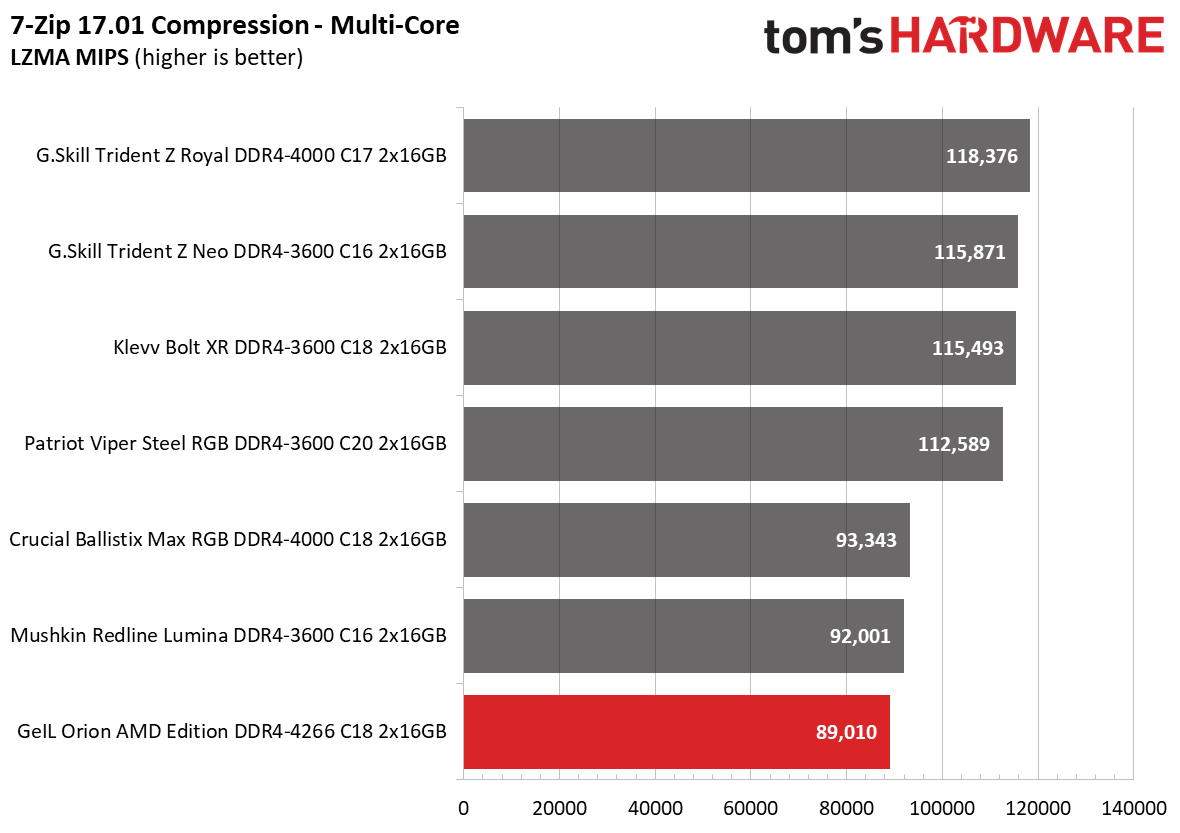
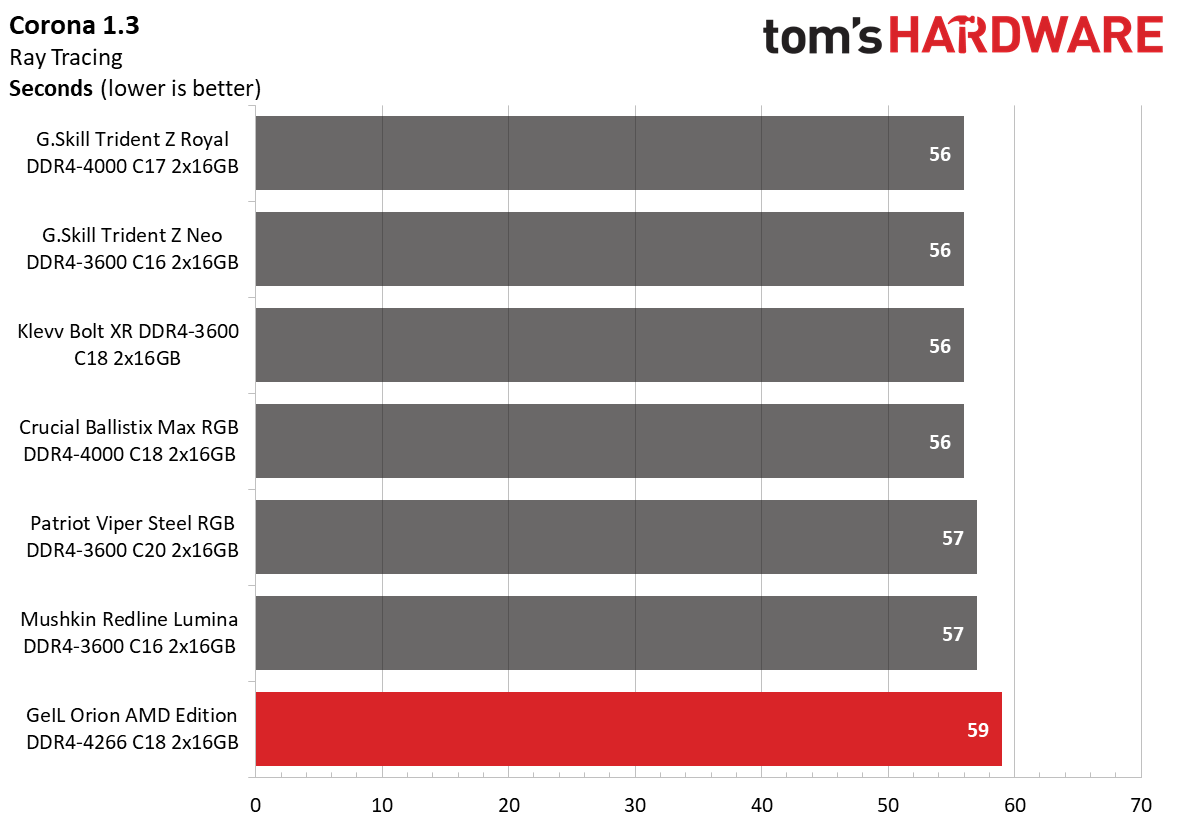
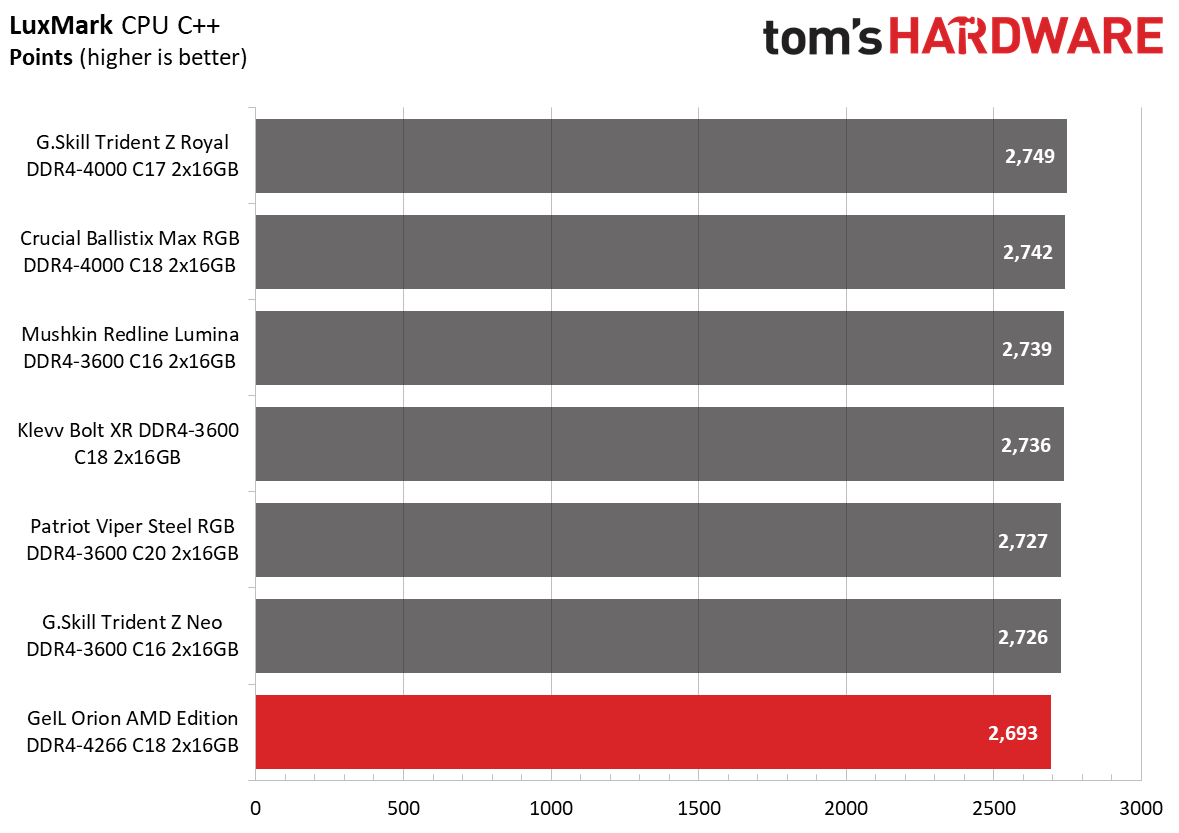
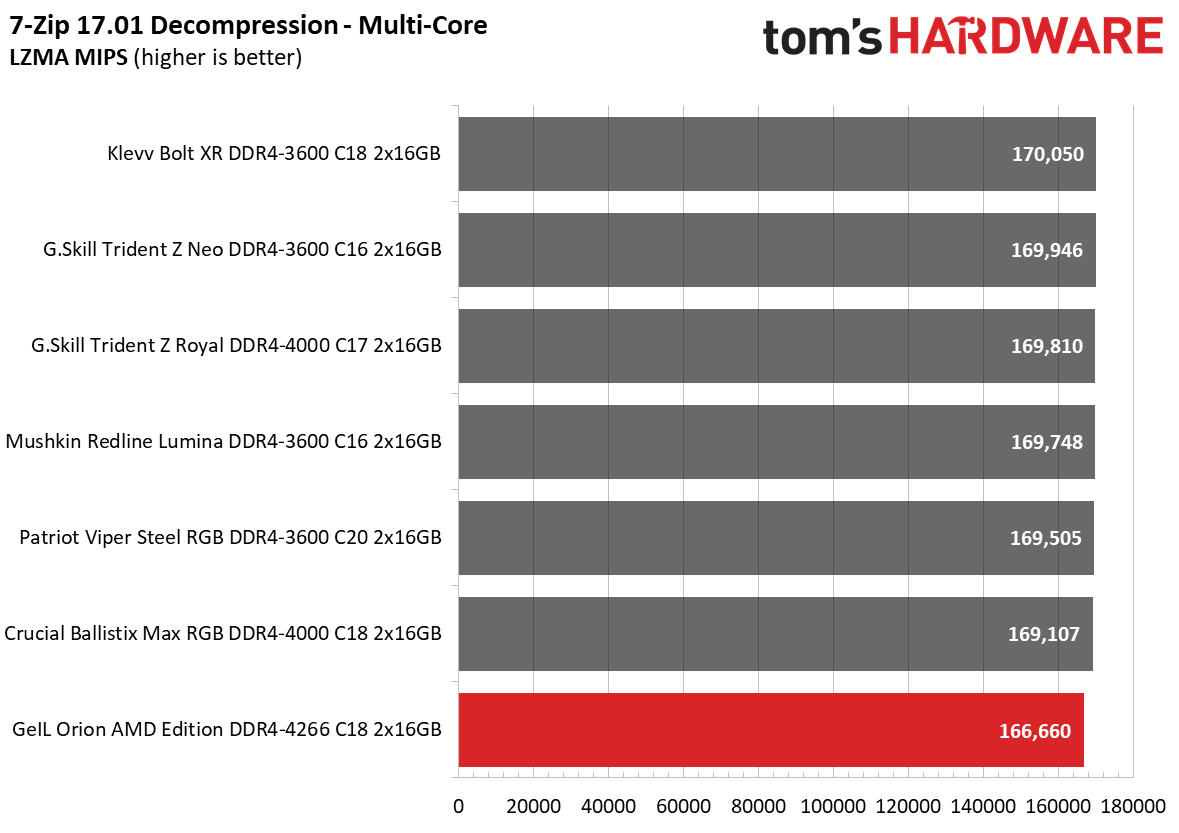
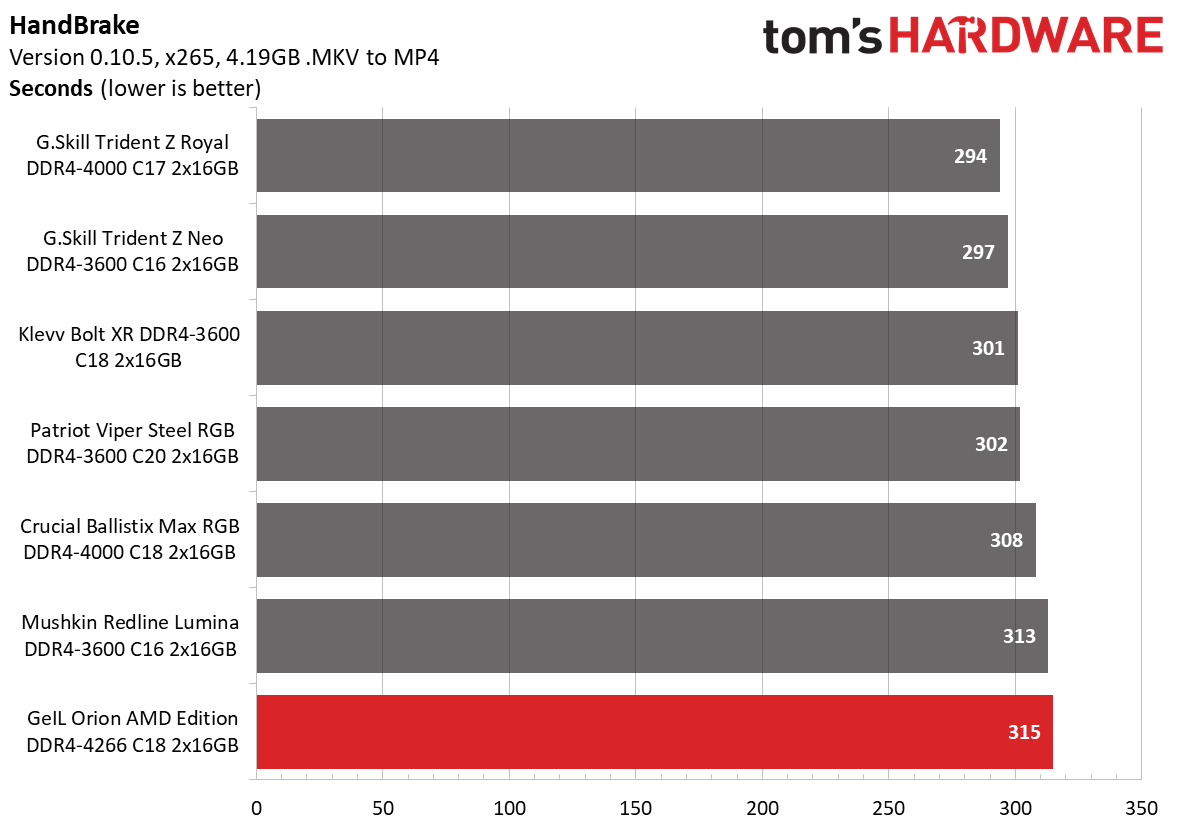
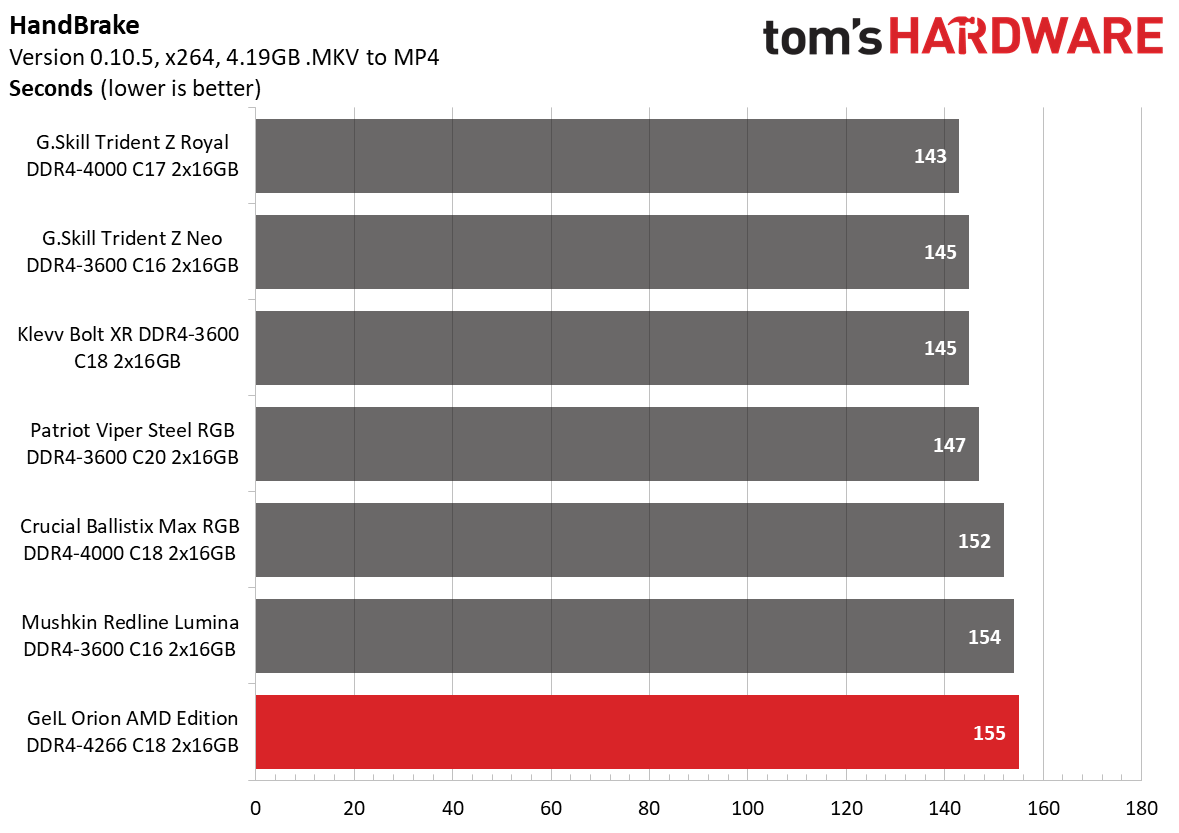
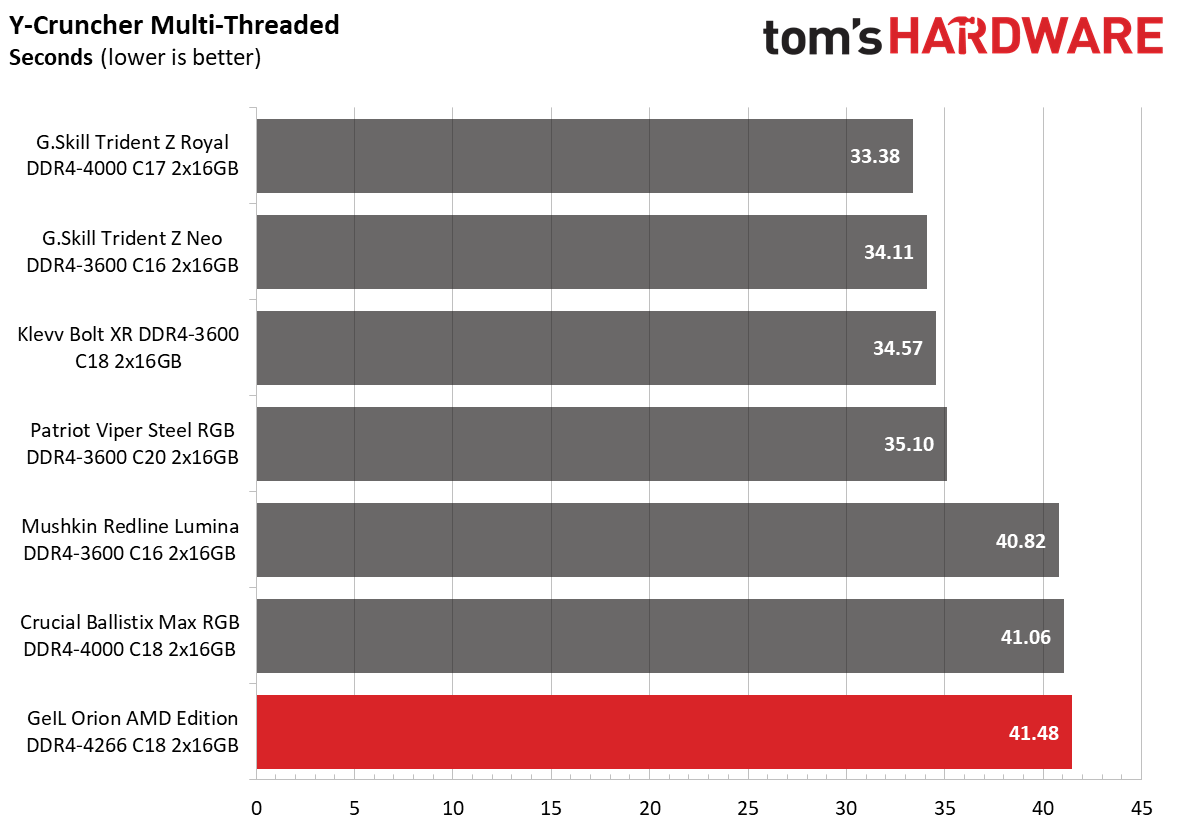
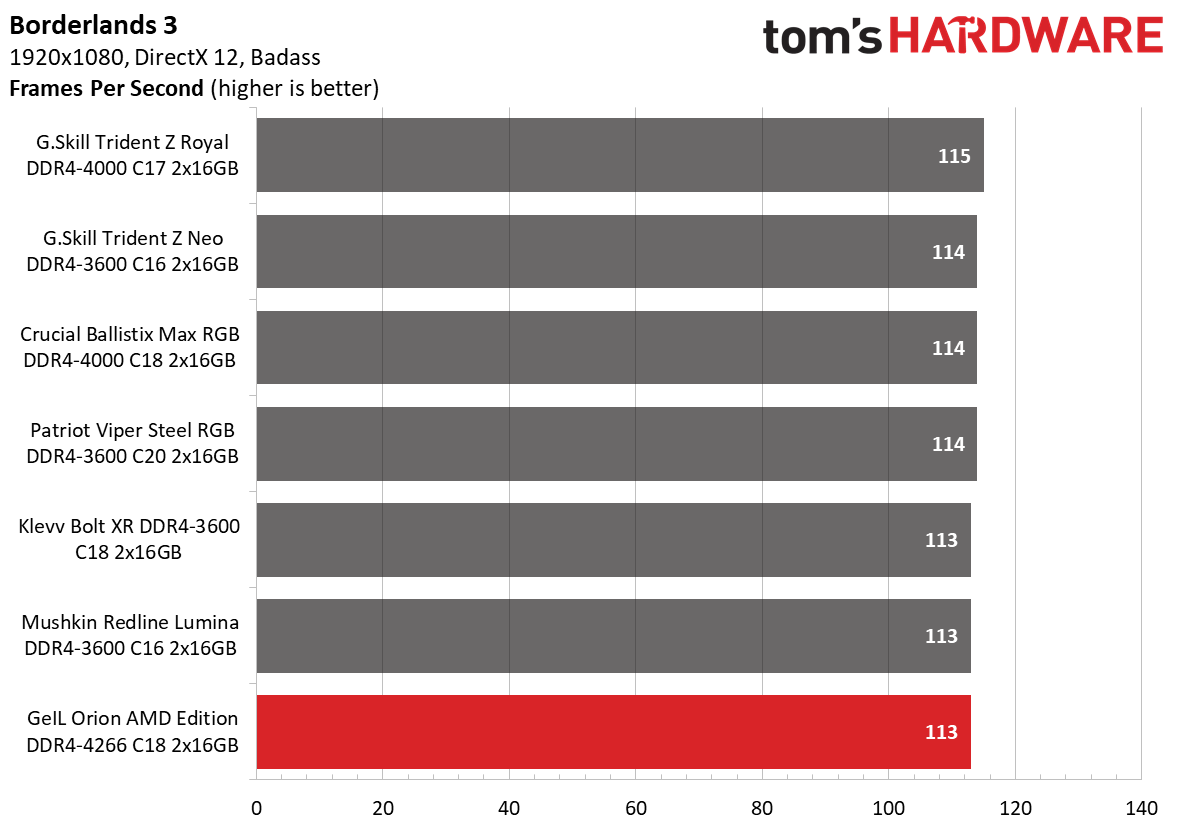
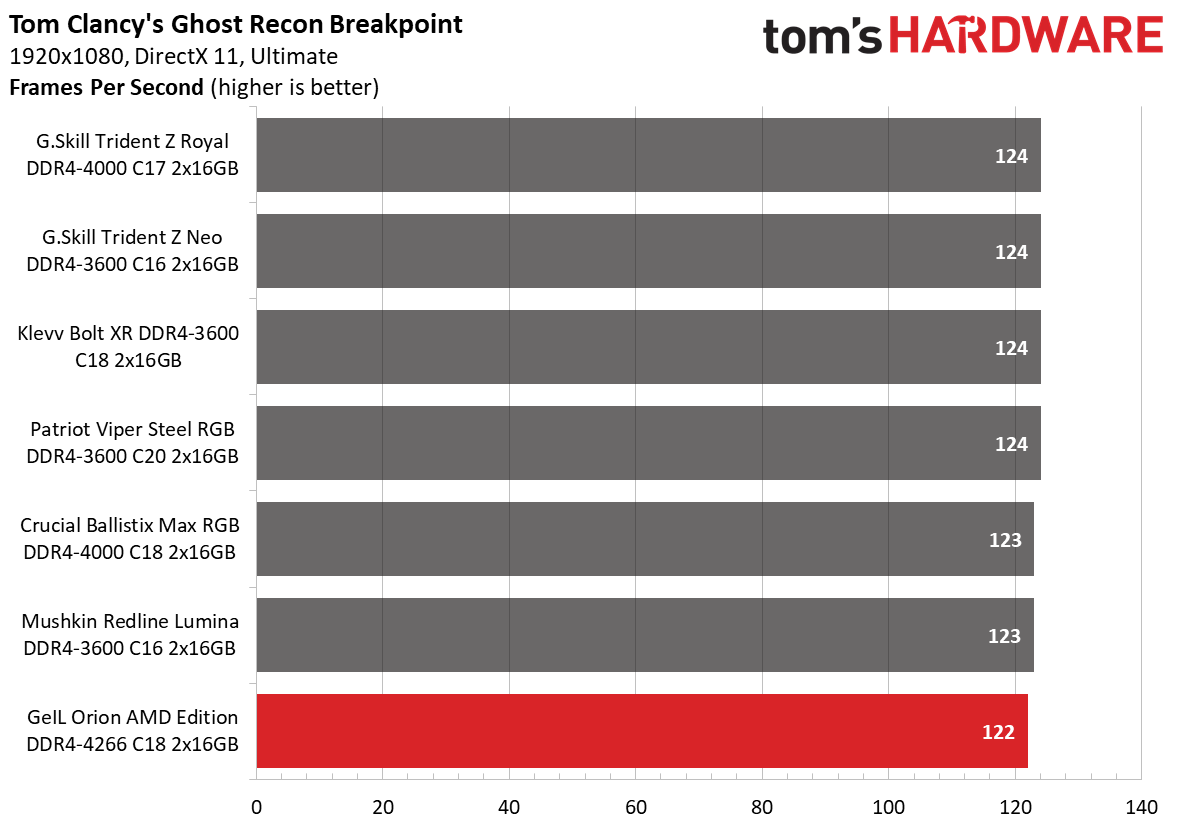
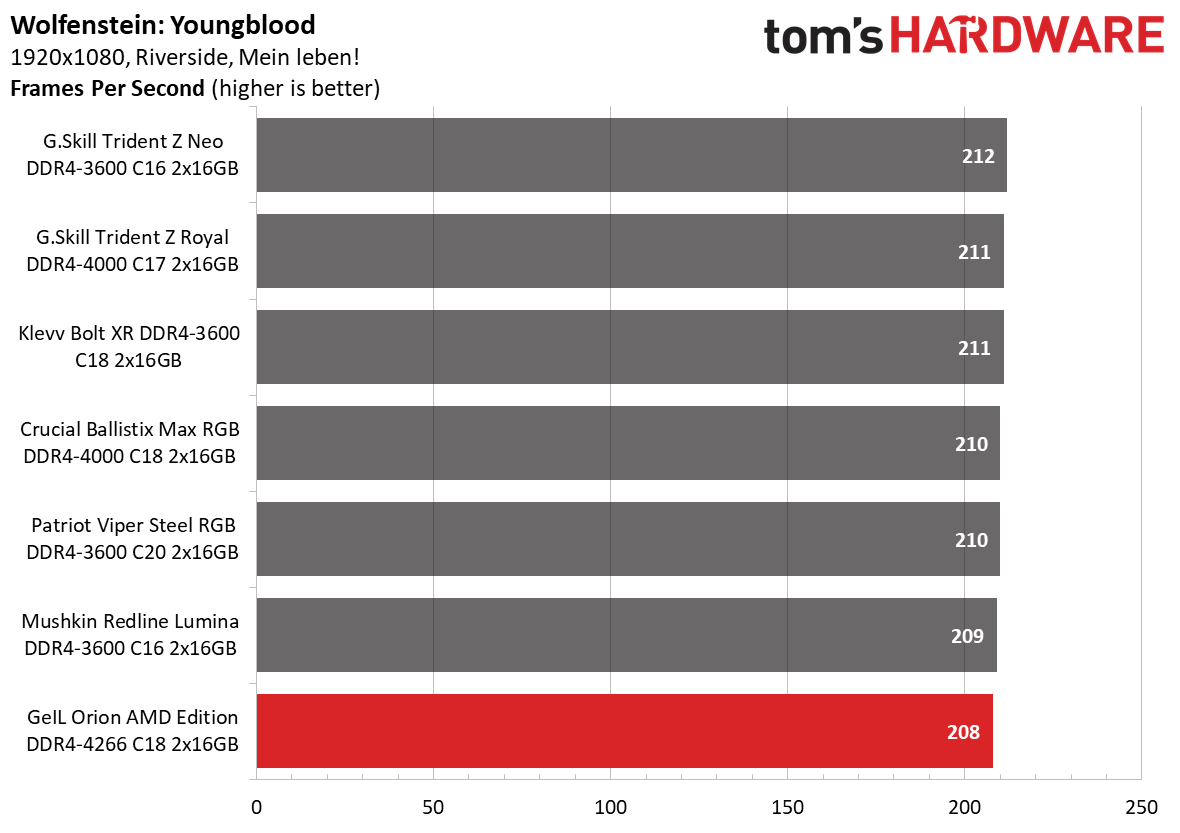
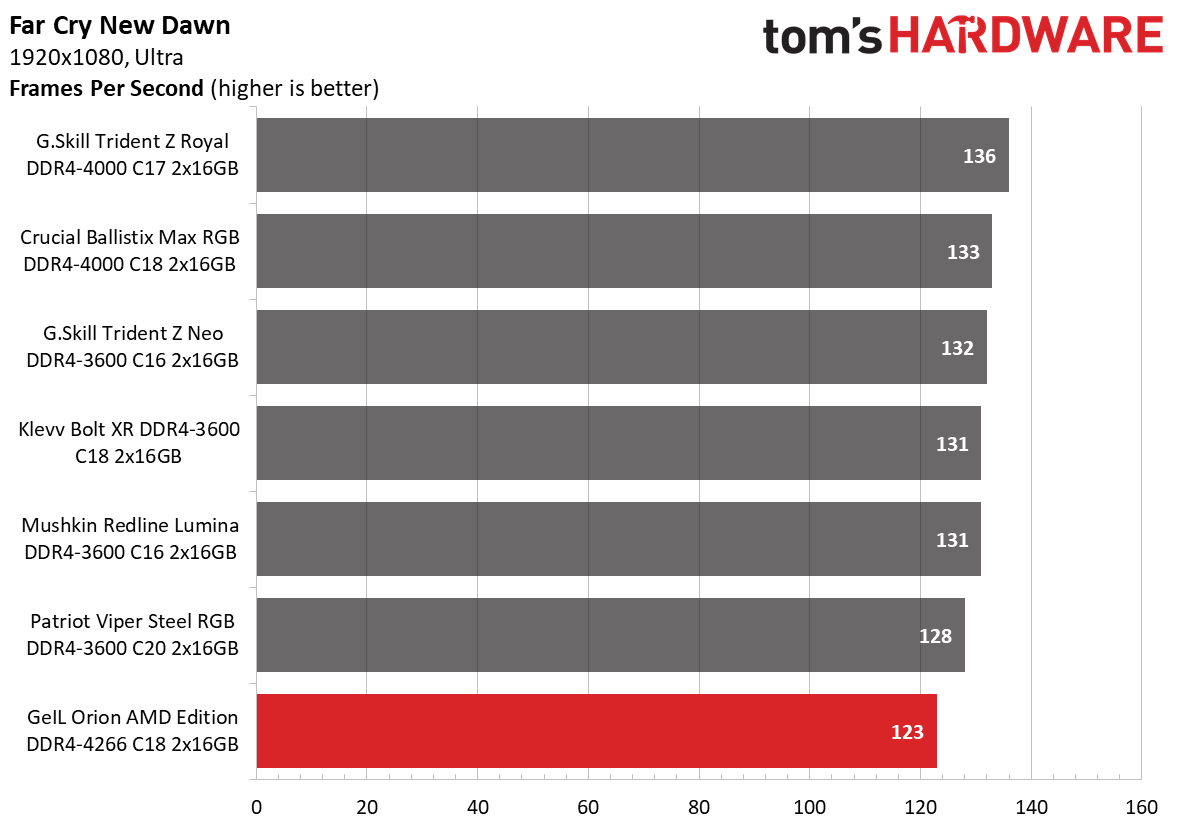
The Orion memory kit had the same outcome on the AMD platform due to the single rank design. We did see a bigger performance difference between it and the Trident Z Royal memory kit, by up to 9%.
Get Tom's Hardware's best news and in-depth reviews, straight to your inbox.
Overclocking and Latency Tuning

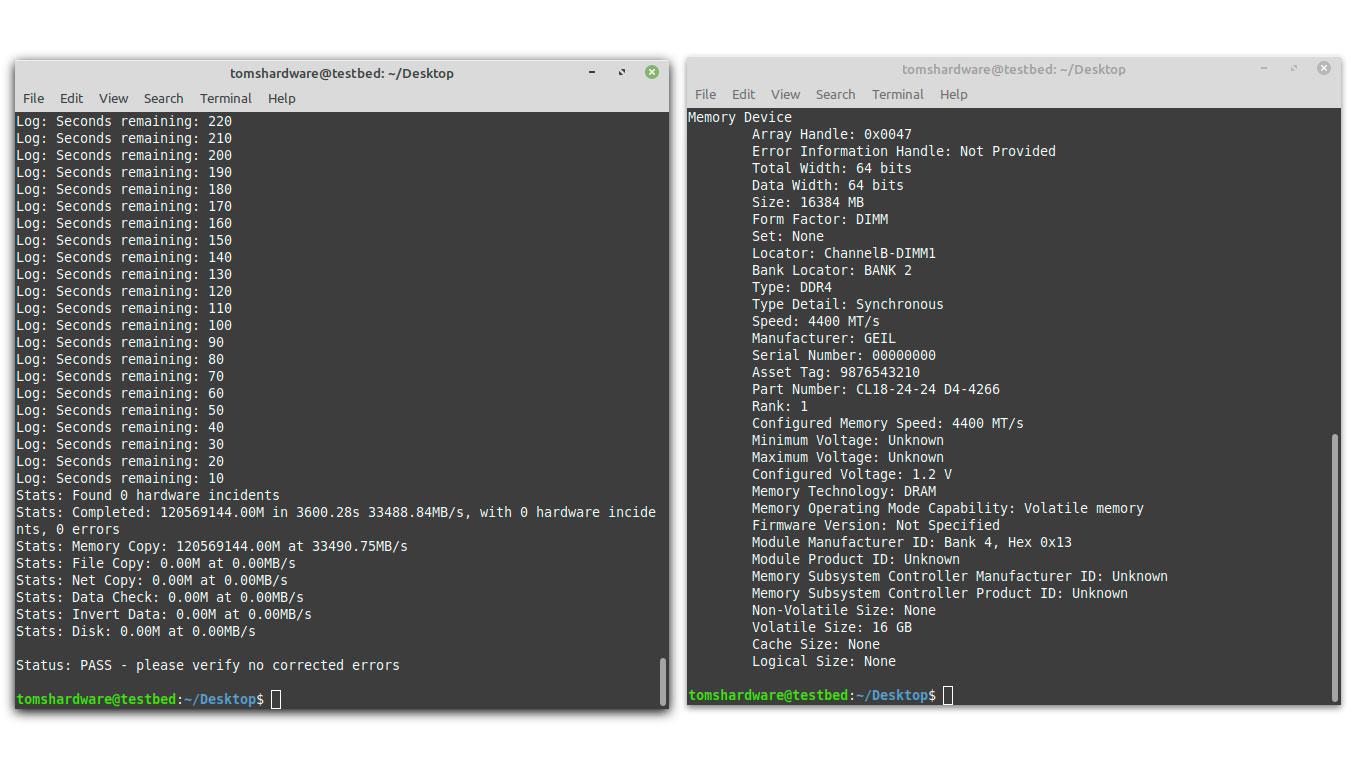
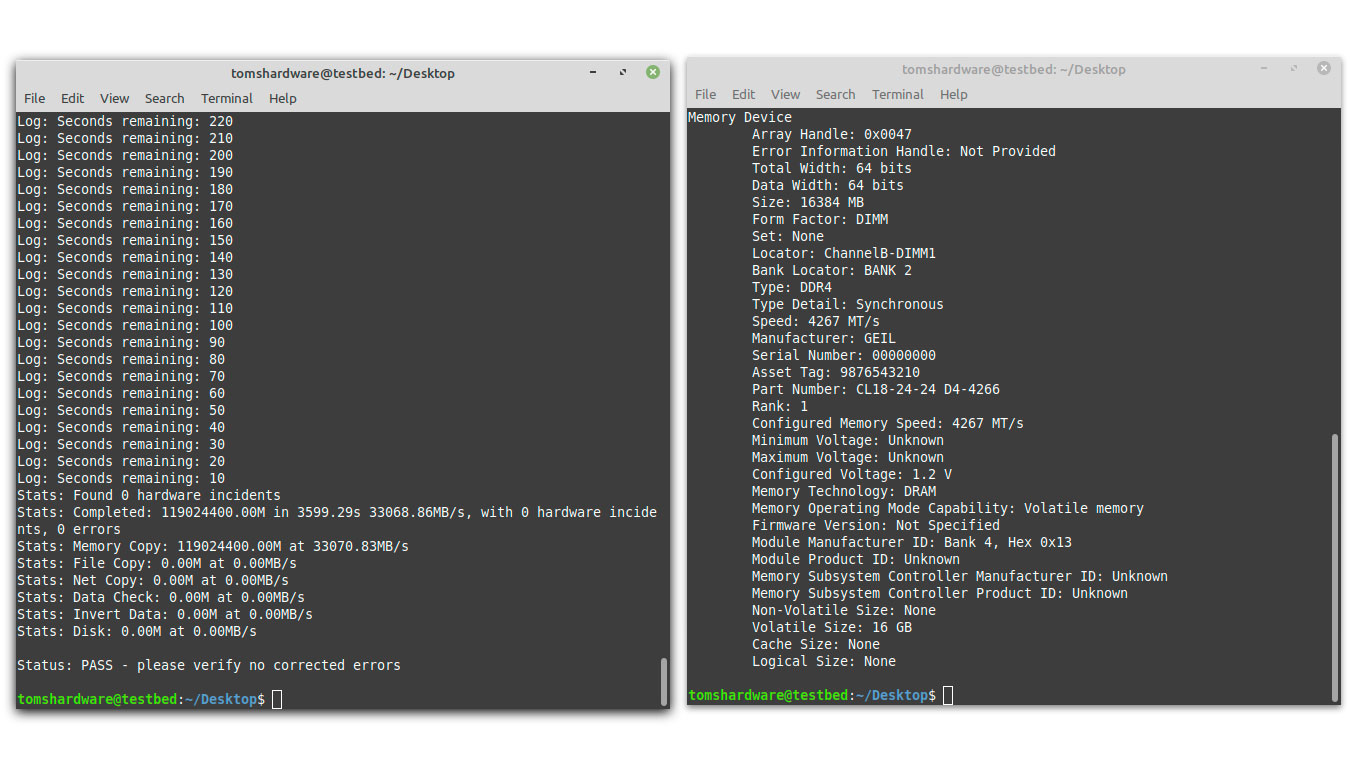
Ultra-fast memory kits like the Orion AMD Edition DDR4-4266 C18 don't typically leave much room for overclocking. Nonetheless, we got our sample to DDR4-4400 at 1.5V. Increasing the DRAM voltage alone wasn't sufficient, though. We also had to loosen the timings to 19-25-25-45.
Lowest Stable Timings
| Memory Kit | DDR4-3600 (1.45V) | DDR4-3800 (1.45V) | DDR4-4000 (1.45V) | DDR4-4133 (1.45V) | DDR4-4200 (1.45V) | DDR4-4266 (1.50V) | DDR4-4400 (1.50V) |
|---|---|---|---|---|---|---|---|
| GeIL Orion AMD Edition DDR4-4266 C18 | N/A | N/A | N/A | N/A | N/A | 17-22-22-44 (2T) | 19-25-25-45 (2T) |
| G.Skill Trident Z Neo DDR4-3600 C16 | 13-14-14-35 (2T) | N/A | N/A | N/A | 19-19-19-39 (2T) | N/A | N/A |
| Crucial Ballistix Max RGB DDR4-4000 C18 | N/A | N/A | 16-19-19-39 (2T) | N/A | 20-20-20-40 (2T) | N/A | N/A |
| G.Skill Trident Z Royal DDR4-4000 C17 | N/A | N/A | 15-16-16-36 (2T) | 18-19-19-39 (2T) | N/A | N/A | N/A |
| Klevv Bolt XR DDR4-3600 C18 | 16-19-19-39 (2T) | N/A | N/A | 18-22-22-42 (2T) | N/A | N/A | N/A |
| Patriot Viper Steel RGB DDR4-3600 C20 | 16-20-20-40 (2T) | 17-26-26-46 (2T) | N/A | N/A | N/A | N/A | N/A |
The memory kit was stable at DDR4-4266 with the timings down to 17-22-22-44, but you'll have to be willing to up the voltage from 1.45V to 1.5V. However, the timings couldn't go any lower without losing stability.
Bottom Line
It's general knowledge that dual-rank memory kits are faster than single-rank memory kits. GeIL's biggest mistake was opting to roll with a single-rank design for its Orion AMD Edition DDR4-4266 C18. It's not uncommon to find single-rank 32GB (2x16GB) memory kits on the market, but they're at a big disadvantage in front of their dual-rank rivals.
Although the Orion AMD Edition DDR4-4266 C18 runs at DDR4-4266, it delivers lower performance when compared to DDR4-3600 memory kits, such as the Klevv Bolt XR DDR4-3600 C18, which has similar timings, or the Patriot Viper Steel RGB DDR4-3600 C20 that sports even looser timings. Don't get us wrong. GeIL's Orion lineup has put out some decent memory kits, unfortunately, this DDR4-4266 C18 32GB (2x16GB) isn't one of them. When in stock, the Orion AMD Edition DDR4-4266 C18 retails for $374.99 on Amazon, adding another con to the memory kit.

Zhiye Liu is a news editor, memory reviewer, and SSD tester at Tom’s Hardware. Although he loves everything that’s hardware, he has a soft spot for CPUs, GPUs, and RAM.
